Quick filters:
Elamite cuneiform Stock Photos and Images
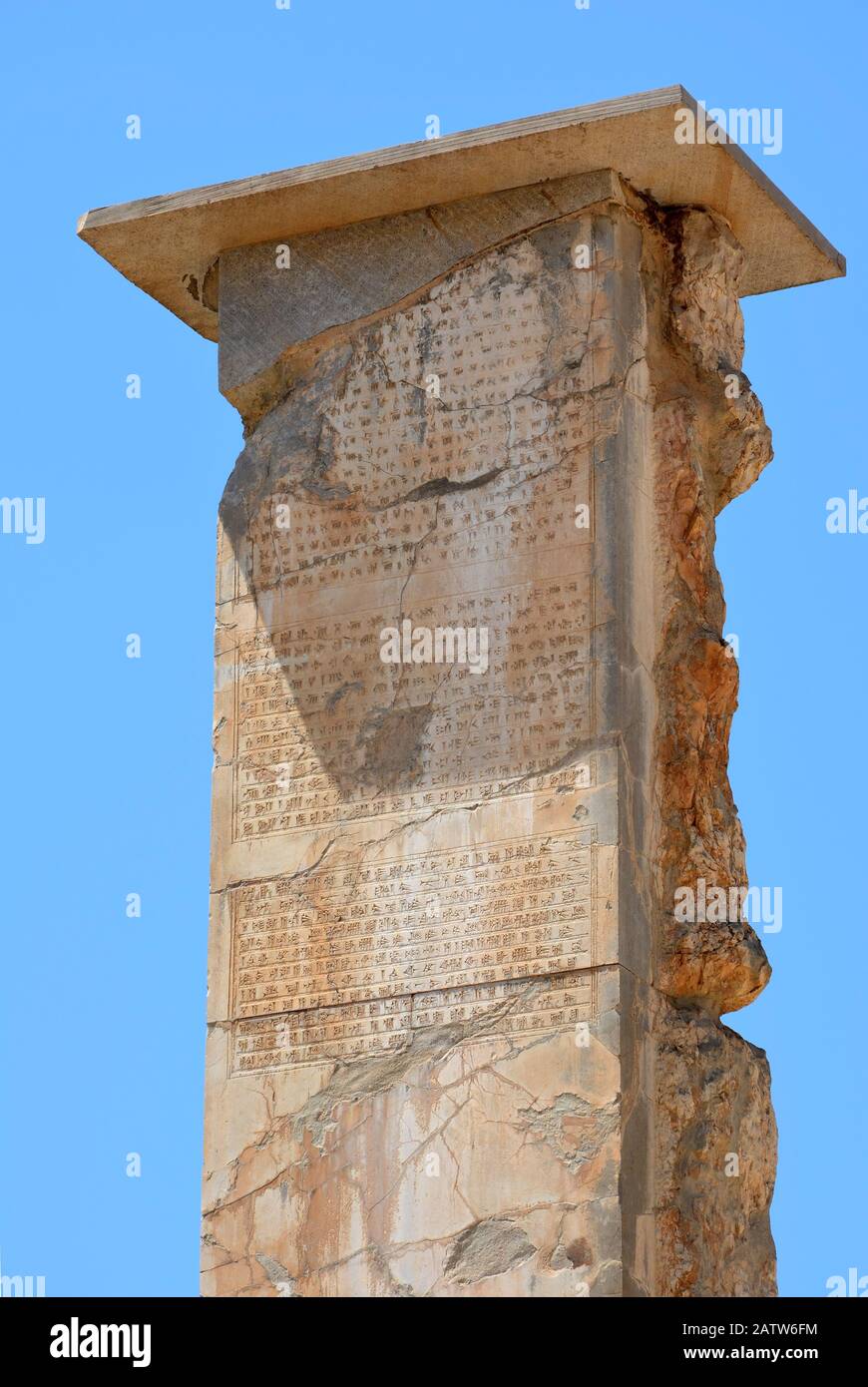 Persepolis, trilingual cuneiform inscription in neo Elamite, Persian and Babylonian Stock Photohttps://www.alamy.com/image-license-details/?v=1https://www.alamy.com/persepolis-trilingual-cuneiform-inscription-in-neo-elamite-persian-and-babylonian-image342302680.html
Persepolis, trilingual cuneiform inscription in neo Elamite, Persian and Babylonian Stock Photohttps://www.alamy.com/image-license-details/?v=1https://www.alamy.com/persepolis-trilingual-cuneiform-inscription-in-neo-elamite-persian-and-babylonian-image342302680.htmlRF2ATW6FM–Persepolis, trilingual cuneiform inscription in neo Elamite, Persian and Babylonian
 6502. King Xerxes cuneiform inscription praising the king in old Persian and Elamite languages. The inscription is several meters tall dating c. 5th. C. BC. located near Van in Turkey. Stock Photohttps://www.alamy.com/image-license-details/?v=1https://www.alamy.com/6502-king-xerxes-cuneiform-inscription-praising-the-king-in-old-persian-and-elamite-languages-the-inscription-is-several-meters-tall-dating-c-5th-c-bc-located-near-van-in-turkey-image334066614.html
6502. King Xerxes cuneiform inscription praising the king in old Persian and Elamite languages. The inscription is several meters tall dating c. 5th. C. BC. located near Van in Turkey. Stock Photohttps://www.alamy.com/image-license-details/?v=1https://www.alamy.com/6502-king-xerxes-cuneiform-inscription-praising-the-king-in-old-persian-and-elamite-languages-the-inscription-is-several-meters-tall-dating-c-5th-c-bc-located-near-van-in-turkey-image334066614.htmlRM2ABE1AE–6502. King Xerxes cuneiform inscription praising the king in old Persian and Elamite languages. The inscription is several meters tall dating c. 5th. C. BC. located near Van in Turkey.
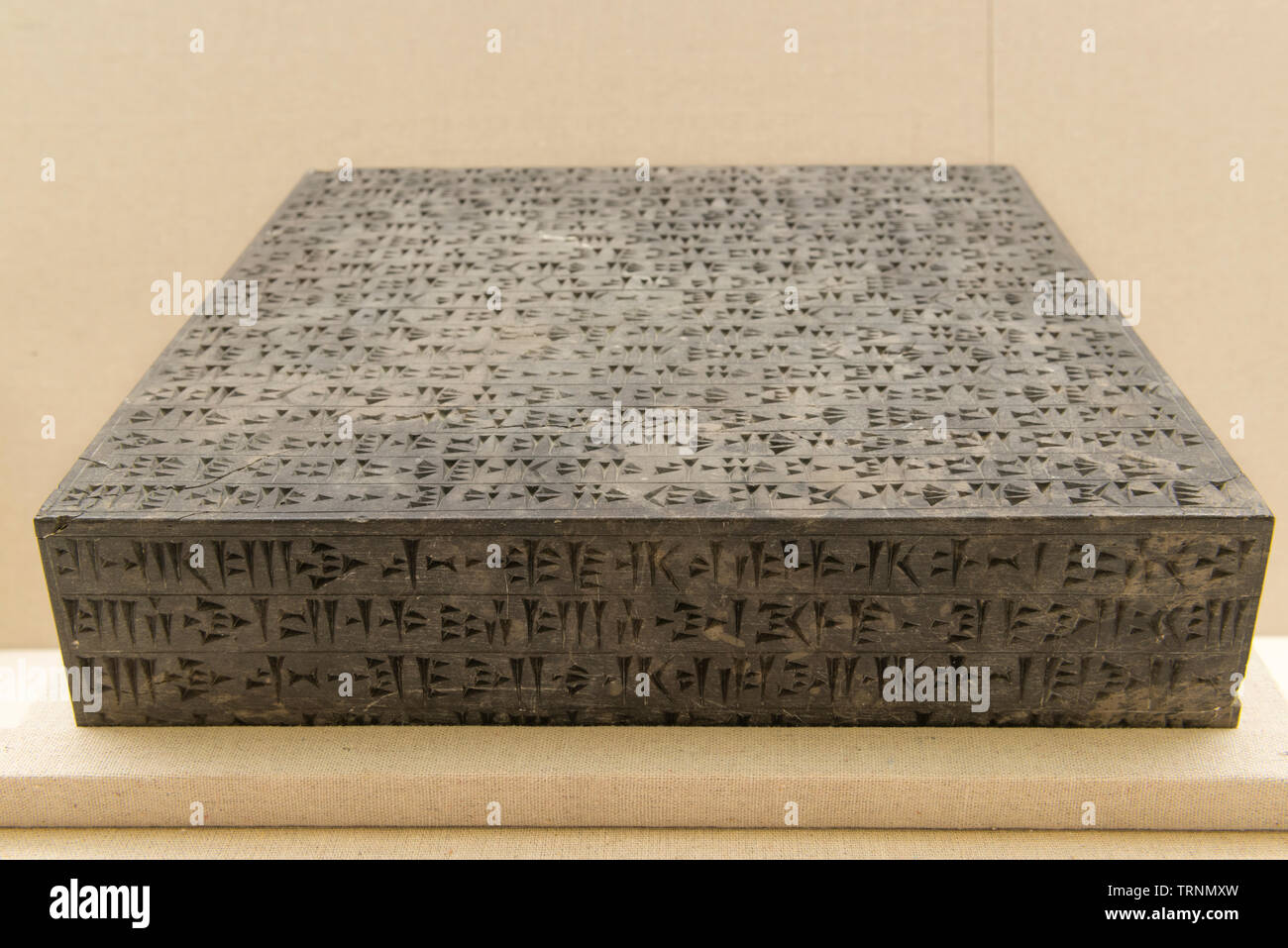 Elamite Cuneiform Inscription Stone of Darius the Great, on Foundation of Apadana Palace with Name of 22 Different Nations. Ca. 520 BC, Stock Photohttps://www.alamy.com/image-license-details/?v=1https://www.alamy.com/elamite-cuneiform-inscription-stone-of-darius-the-great-on-foundation-of-apadana-palace-with-name-of-22-different-nations-ca-520-bc-image255559665.html
Elamite Cuneiform Inscription Stone of Darius the Great, on Foundation of Apadana Palace with Name of 22 Different Nations. Ca. 520 BC, Stock Photohttps://www.alamy.com/image-license-details/?v=1https://www.alamy.com/elamite-cuneiform-inscription-stone-of-darius-the-great-on-foundation-of-apadana-palace-with-name-of-22-different-nations-ca-520-bc-image255559665.htmlRMTRNMXW–Elamite Cuneiform Inscription Stone of Darius the Great, on Foundation of Apadana Palace with Name of 22 Different Nations. Ca. 520 BC,
 A brick formed from brown clay with a cuneiform inscription. The name of the elamite king Silhak-Insusinak (ca. 1150-1100 BC) is mentioned. Casting has number A 1892 Stock Photohttps://www.alamy.com/image-license-details/?v=1https://www.alamy.com/a-brick-formed-from-brown-clay-with-a-cuneiform-inscription-the-name-of-the-elamite-king-silhak-insusinak-ca-1150-1100-bc-is-mentioned-casting-has-number-a-1892-image344518062.html
A brick formed from brown clay with a cuneiform inscription. The name of the elamite king Silhak-Insusinak (ca. 1150-1100 BC) is mentioned. Casting has number A 1892 Stock Photohttps://www.alamy.com/image-license-details/?v=1https://www.alamy.com/a-brick-formed-from-brown-clay-with-a-cuneiform-inscription-the-name-of-the-elamite-king-silhak-insusinak-ca-1150-1100-bc-is-mentioned-casting-has-number-a-1892-image344518062.htmlRM2B0E48E–A brick formed from brown clay with a cuneiform inscription. The name of the elamite king Silhak-Insusinak (ca. 1150-1100 BC) is mentioned. Casting has number A 1892
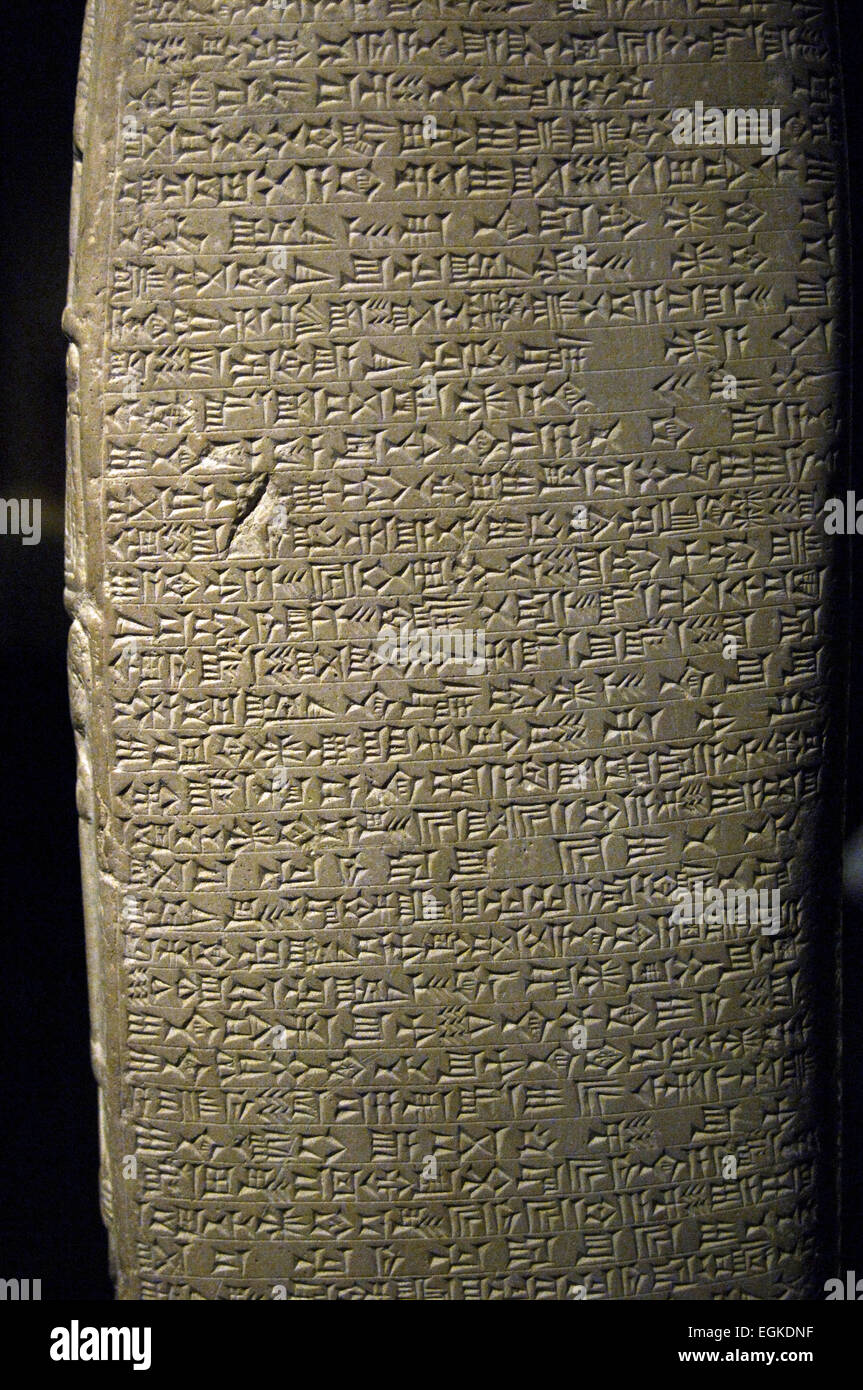 Mesopotamia. Kudurru (stele) of Shitti-Marduk. Limestone. Inscription. Cuneiform. Nebuchadnezzar I (1124-1105 BC) reign. Elamite campaign. From Sippar (Abu Habba). Babylonian. Stock Photohttps://www.alamy.com/image-license-details/?v=1https://www.alamy.com/stock-photo-mesopotamia-kudurru-stele-of-shitti-marduk-limestone-inscription-cuneiform-79103851.html
Mesopotamia. Kudurru (stele) of Shitti-Marduk. Limestone. Inscription. Cuneiform. Nebuchadnezzar I (1124-1105 BC) reign. Elamite campaign. From Sippar (Abu Habba). Babylonian. Stock Photohttps://www.alamy.com/image-license-details/?v=1https://www.alamy.com/stock-photo-mesopotamia-kudurru-stele-of-shitti-marduk-limestone-inscription-cuneiform-79103851.htmlRMEGKDNF–Mesopotamia. Kudurru (stele) of Shitti-Marduk. Limestone. Inscription. Cuneiform. Nebuchadnezzar I (1124-1105 BC) reign. Elamite campaign. From Sippar (Abu Habba). Babylonian.
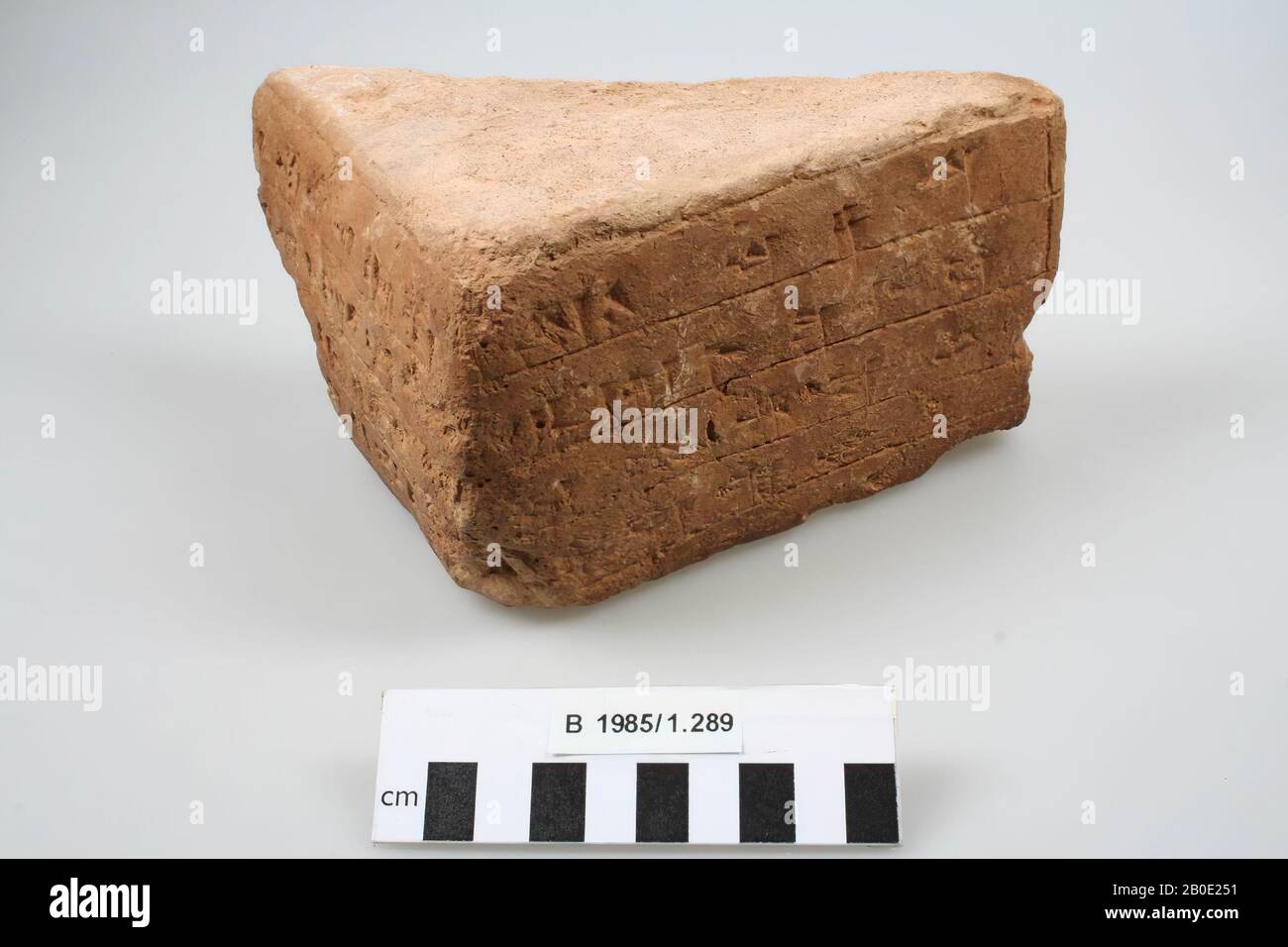 A triangular brick with a cuneiform text, made of yellow-orange clay., Building element, inscription, pottery, L 16 cm, W 13.5 cm, H 10 cm, Middle Elamite Period 1500-1100 BC. , Iran Stock Photohttps://www.alamy.com/image-license-details/?v=1https://www.alamy.com/a-triangular-brick-with-a-cuneiform-text-made-of-yellow-orange-clay-building-element-inscription-pottery-l-16-cm-w-135-cm-h-10-cm-middle-elamite-period-1500-1100-bc-iran-image344516397.html
A triangular brick with a cuneiform text, made of yellow-orange clay., Building element, inscription, pottery, L 16 cm, W 13.5 cm, H 10 cm, Middle Elamite Period 1500-1100 BC. , Iran Stock Photohttps://www.alamy.com/image-license-details/?v=1https://www.alamy.com/a-triangular-brick-with-a-cuneiform-text-made-of-yellow-orange-clay-building-element-inscription-pottery-l-16-cm-w-135-cm-h-10-cm-middle-elamite-period-1500-1100-bc-iran-image344516397.htmlRM2B0E251–A triangular brick with a cuneiform text, made of yellow-orange clay., Building element, inscription, pottery, L 16 cm, W 13.5 cm, H 10 cm, Middle Elamite Period 1500-1100 BC. , Iran
 Art inspired by Cuneiform tablet impressed with seals: administrative document inscribed in Achaemenid Elamite, Achaemenid, ca. 500 B.C., Iran, Qasr-i Abu Nasr, Achaemenid, Clay, 0.98 x 1.38 x .67 in. (2.49 x 3.51 x 1.7 cm), Clay-Tablets-Inscribed-Seal Impressions, Classic works modernized by Artotop with a splash of modernity. Shapes, color and value, eye-catching visual impact on art. Emotions through freedom of artworks in a contemporary way. A timeless message pursuing a wildly creative new direction. Artists turning to the digital medium and creating the Artotop NFT Stock Photohttps://www.alamy.com/image-license-details/?v=1https://www.alamy.com/art-inspired-by-cuneiform-tablet-impressed-with-seals-administrative-document-inscribed-in-achaemenid-elamite-achaemenid-ca-500-bc-iran-qasr-i-abu-nasr-achaemenid-clay-098-x-138-x-67-in-249-x-351-x-17-cm-clay-tablets-inscribed-seal-impressions-classic-works-modernized-by-artotop-with-a-splash-of-modernity-shapes-color-and-value-eye-catching-visual-impact-on-art-emotions-through-freedom-of-artworks-in-a-contemporary-way-a-timeless-message-pursuing-a-wildly-creative-new-direction-artists-turning-to-the-digital-medium-and-creating-the-artotop-nft-image462944584.html
Art inspired by Cuneiform tablet impressed with seals: administrative document inscribed in Achaemenid Elamite, Achaemenid, ca. 500 B.C., Iran, Qasr-i Abu Nasr, Achaemenid, Clay, 0.98 x 1.38 x .67 in. (2.49 x 3.51 x 1.7 cm), Clay-Tablets-Inscribed-Seal Impressions, Classic works modernized by Artotop with a splash of modernity. Shapes, color and value, eye-catching visual impact on art. Emotions through freedom of artworks in a contemporary way. A timeless message pursuing a wildly creative new direction. Artists turning to the digital medium and creating the Artotop NFT Stock Photohttps://www.alamy.com/image-license-details/?v=1https://www.alamy.com/art-inspired-by-cuneiform-tablet-impressed-with-seals-administrative-document-inscribed-in-achaemenid-elamite-achaemenid-ca-500-bc-iran-qasr-i-abu-nasr-achaemenid-clay-098-x-138-x-67-in-249-x-351-x-17-cm-clay-tablets-inscribed-seal-impressions-classic-works-modernized-by-artotop-with-a-splash-of-modernity-shapes-color-and-value-eye-catching-visual-impact-on-art-emotions-through-freedom-of-artworks-in-a-contemporary-way-a-timeless-message-pursuing-a-wildly-creative-new-direction-artists-turning-to-the-digital-medium-and-creating-the-artotop-nft-image462944584.htmlRF2HW4XF4–Art inspired by Cuneiform tablet impressed with seals: administrative document inscribed in Achaemenid Elamite, Achaemenid, ca. 500 B.C., Iran, Qasr-i Abu Nasr, Achaemenid, Clay, 0.98 x 1.38 x .67 in. (2.49 x 3.51 x 1.7 cm), Clay-Tablets-Inscribed-Seal Impressions, Classic works modernized by Artotop with a splash of modernity. Shapes, color and value, eye-catching visual impact on art. Emotions through freedom of artworks in a contemporary way. A timeless message pursuing a wildly creative new direction. Artists turning to the digital medium and creating the Artotop NFT
 Achaemenid Empire. Ganjnameh. Ancient inscriptions carved in granite in 3 languages: Old Persian, Neo-Babylonian and Neo-Elamite. By Darius the Great (521-485 BC) and Xerxes the Great (485-65 BC). Cuneiform alphabets. Near Hamedan, Iran (Persia). Stock Photohttps://www.alamy.com/image-license-details/?v=1https://www.alamy.com/achaemenid-empire-ganjnameh-ancient-inscriptions-carved-in-granite-in-3-languages-old-persian-neo-babylonian-and-neo-elamite-by-darius-the-great-521-485-bc-and-xerxes-the-great-485-65-bc-cuneiform-alphabets-near-hamedan-iran-persia-image179742455.html
Achaemenid Empire. Ganjnameh. Ancient inscriptions carved in granite in 3 languages: Old Persian, Neo-Babylonian and Neo-Elamite. By Darius the Great (521-485 BC) and Xerxes the Great (485-65 BC). Cuneiform alphabets. Near Hamedan, Iran (Persia). Stock Photohttps://www.alamy.com/image-license-details/?v=1https://www.alamy.com/achaemenid-empire-ganjnameh-ancient-inscriptions-carved-in-granite-in-3-languages-old-persian-neo-babylonian-and-neo-elamite-by-darius-the-great-521-485-bc-and-xerxes-the-great-485-65-bc-cuneiform-alphabets-near-hamedan-iran-persia-image179742455.htmlRMMCBY9B–Achaemenid Empire. Ganjnameh. Ancient inscriptions carved in granite in 3 languages: Old Persian, Neo-Babylonian and Neo-Elamite. By Darius the Great (521-485 BC) and Xerxes the Great (485-65 BC). Cuneiform alphabets. Near Hamedan, Iran (Persia).
 Cuneiform tablet impressed with seals: administrative document inscribed in Achaemenid Elamite ca. 500 B.C. Achaemenid This tongue-shaped clay tablet is round on one side and straight on the other. An Elamite cuneiform text covers much of the surface; impressions of cylinder seals appear on the reverse and flat sides of the tablet. The impression on the reverse shows a hero holding a winged lion creature on either side of him by its hind leg. The impression on the flat side is difficult to make out, but may show a bearded man with long hair.The Elamite text reads:60 rams, 75 ewes, 20 intermedi Stock Photohttps://www.alamy.com/image-license-details/?v=1https://www.alamy.com/cuneiform-tablet-impressed-with-seals-administrative-document-inscribed-in-achaemenid-elamite-ca-500-bc-achaemenid-this-tongue-shaped-clay-tablet-is-round-on-one-side-and-straight-on-the-other-an-elamite-cuneiform-text-covers-much-of-the-surface-impressions-of-cylinder-seals-appear-on-the-reverse-and-flat-sides-of-the-tablet-the-impression-on-the-reverse-shows-a-hero-holding-a-winged-lion-creature-on-either-side-of-him-by-its-hind-leg-the-impression-on-the-flat-side-is-difficult-to-make-out-but-may-show-a-bearded-man-with-long-hairthe-elamite-text-reads60-rams-75-ewes-20-intermedi-image458473008.html
Cuneiform tablet impressed with seals: administrative document inscribed in Achaemenid Elamite ca. 500 B.C. Achaemenid This tongue-shaped clay tablet is round on one side and straight on the other. An Elamite cuneiform text covers much of the surface; impressions of cylinder seals appear on the reverse and flat sides of the tablet. The impression on the reverse shows a hero holding a winged lion creature on either side of him by its hind leg. The impression on the flat side is difficult to make out, but may show a bearded man with long hair.The Elamite text reads:60 rams, 75 ewes, 20 intermedi Stock Photohttps://www.alamy.com/image-license-details/?v=1https://www.alamy.com/cuneiform-tablet-impressed-with-seals-administrative-document-inscribed-in-achaemenid-elamite-ca-500-bc-achaemenid-this-tongue-shaped-clay-tablet-is-round-on-one-side-and-straight-on-the-other-an-elamite-cuneiform-text-covers-much-of-the-surface-impressions-of-cylinder-seals-appear-on-the-reverse-and-flat-sides-of-the-tablet-the-impression-on-the-reverse-shows-a-hero-holding-a-winged-lion-creature-on-either-side-of-him-by-its-hind-leg-the-impression-on-the-flat-side-is-difficult-to-make-out-but-may-show-a-bearded-man-with-long-hairthe-elamite-text-reads60-rams-75-ewes-20-intermedi-image458473008.htmlRM2HHW700–Cuneiform tablet impressed with seals: administrative document inscribed in Achaemenid Elamite ca. 500 B.C. Achaemenid This tongue-shaped clay tablet is round on one side and straight on the other. An Elamite cuneiform text covers much of the surface; impressions of cylinder seals appear on the reverse and flat sides of the tablet. The impression on the reverse shows a hero holding a winged lion creature on either side of him by its hind leg. The impression on the flat side is difficult to make out, but may show a bearded man with long hair.The Elamite text reads:60 rams, 75 ewes, 20 intermedi
 Chogha Zanbil, brick with cuneiform inscription, Ziggrat(ziqqrat) of the ancient Elamites, Khuzestan Province, Iran, Persia, Western Asia, Asia Stock Photohttps://www.alamy.com/image-license-details/?v=1https://www.alamy.com/chogha-zanbil-brick-with-cuneiform-inscription-ziggratziqqrat-of-the-ancient-elamites-khuzestan-province-iran-persia-western-asia-asia-image435498596.html
Chogha Zanbil, brick with cuneiform inscription, Ziggrat(ziqqrat) of the ancient Elamites, Khuzestan Province, Iran, Persia, Western Asia, Asia Stock Photohttps://www.alamy.com/image-license-details/?v=1https://www.alamy.com/chogha-zanbil-brick-with-cuneiform-inscription-ziggratziqqrat-of-the-ancient-elamites-khuzestan-province-iran-persia-western-asia-asia-image435498596.htmlRM2G8EJW8–Chogha Zanbil, brick with cuneiform inscription, Ziggrat(ziqqrat) of the ancient Elamites, Khuzestan Province, Iran, Persia, Western Asia, Asia
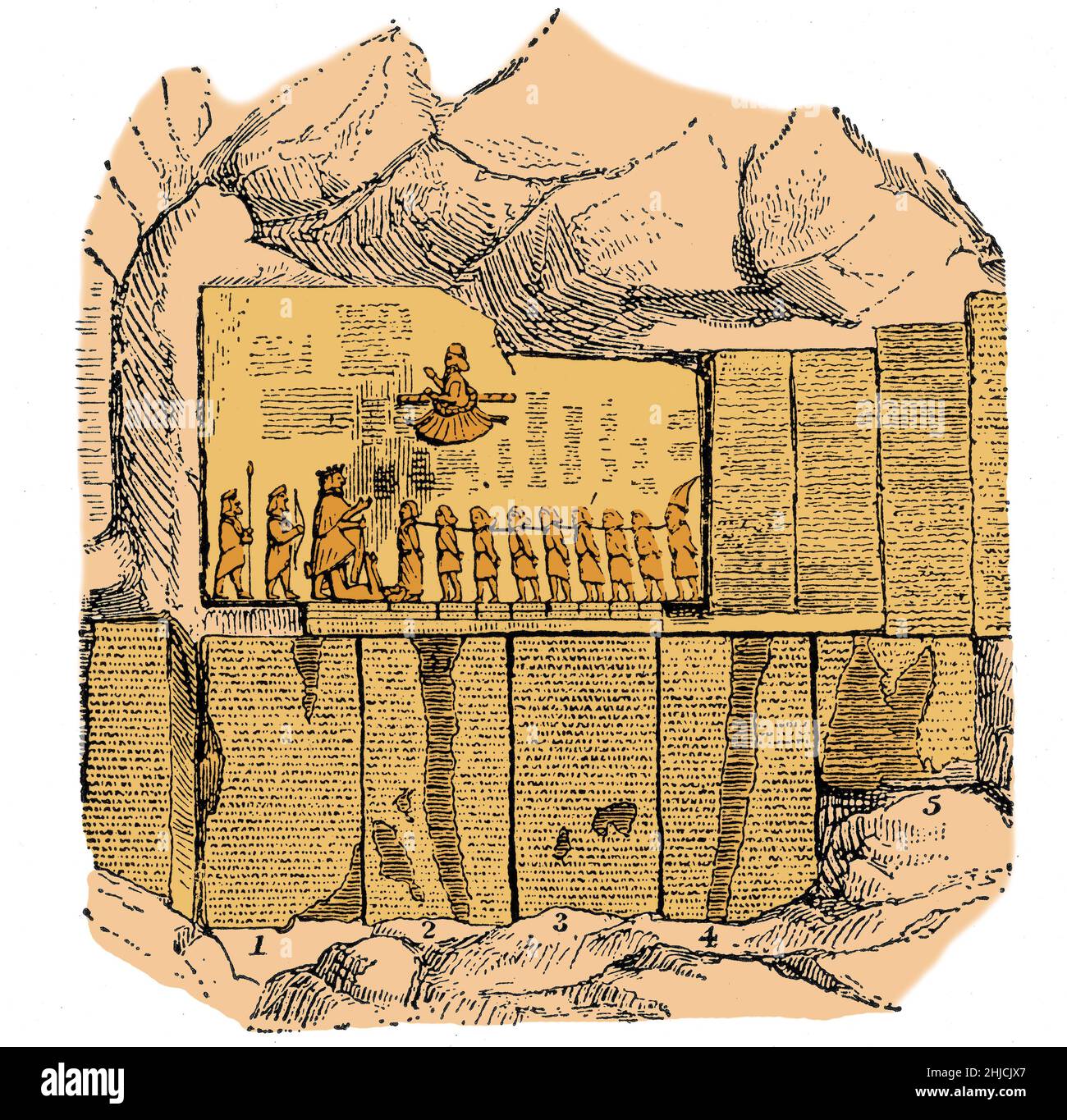 The Behistun Inscription is a large rock relief on a cliff at Mount Behistun near the city of Kermanshah, Iran. Authored by Darius the Great sometime between 522 BC and 486 BC, the inscription includes a brief autobiography and victorious battle history. The text appears in three cuneiform script languages: Old Persian, Elamite, and Babylonian. Illustration from Edward Clodd's The Story of the Alphabet, 1900. Colorized. Stock Photohttps://www.alamy.com/image-license-details/?v=1https://www.alamy.com/the-behistun-inscription-is-a-large-rock-relief-on-a-cliff-at-mount-behistun-near-the-city-of-kermanshah-iran-authored-by-darius-the-great-sometime-between-522-bc-and-486-bc-the-inscription-includes-a-brief-autobiography-and-victorious-battle-history-the-text-appears-in-three-cuneiform-script-languages-old-persian-elamite-and-babylonian-illustration-from-edward-clodds-the-story-of-the-alphabet-1900-colorized-image458811647.html
The Behistun Inscription is a large rock relief on a cliff at Mount Behistun near the city of Kermanshah, Iran. Authored by Darius the Great sometime between 522 BC and 486 BC, the inscription includes a brief autobiography and victorious battle history. The text appears in three cuneiform script languages: Old Persian, Elamite, and Babylonian. Illustration from Edward Clodd's The Story of the Alphabet, 1900. Colorized. Stock Photohttps://www.alamy.com/image-license-details/?v=1https://www.alamy.com/the-behistun-inscription-is-a-large-rock-relief-on-a-cliff-at-mount-behistun-near-the-city-of-kermanshah-iran-authored-by-darius-the-great-sometime-between-522-bc-and-486-bc-the-inscription-includes-a-brief-autobiography-and-victorious-battle-history-the-text-appears-in-three-cuneiform-script-languages-old-persian-elamite-and-babylonian-illustration-from-edward-clodds-the-story-of-the-alphabet-1900-colorized-image458811647.htmlRM2HJCJX7–The Behistun Inscription is a large rock relief on a cliff at Mount Behistun near the city of Kermanshah, Iran. Authored by Darius the Great sometime between 522 BC and 486 BC, the inscription includes a brief autobiography and victorious battle history. The text appears in three cuneiform script languages: Old Persian, Elamite, and Babylonian. Illustration from Edward Clodd's The Story of the Alphabet, 1900. Colorized.
 Mesopotamia. Kudurru (stele) of Shitti-Marduk. Limestone. Inscription. Cuneiform. Nebuchadnezzar I (1124-1105 BC) reign. Elamite campaign. From Sippar (Abu Habba). Babylonian. Stock Photohttps://www.alamy.com/image-license-details/?v=1https://www.alamy.com/mesopotamia-kudurru-stele-of-shitti-marduk-limestone-inscription-cuneiform-nebuchadnezzar-i-1124-1105-bc-reign-elamite-campaign-from-sippar-abu-habba-babylonian-image209678855.html
Mesopotamia. Kudurru (stele) of Shitti-Marduk. Limestone. Inscription. Cuneiform. Nebuchadnezzar I (1124-1105 BC) reign. Elamite campaign. From Sippar (Abu Habba). Babylonian. Stock Photohttps://www.alamy.com/image-license-details/?v=1https://www.alamy.com/mesopotamia-kudurru-stele-of-shitti-marduk-limestone-inscription-cuneiform-nebuchadnezzar-i-1124-1105-bc-reign-elamite-campaign-from-sippar-abu-habba-babylonian-image209678855.htmlRMP53KEF–Mesopotamia. Kudurru (stele) of Shitti-Marduk. Limestone. Inscription. Cuneiform. Nebuchadnezzar I (1124-1105 BC) reign. Elamite campaign. From Sippar (Abu Habba). Babylonian.
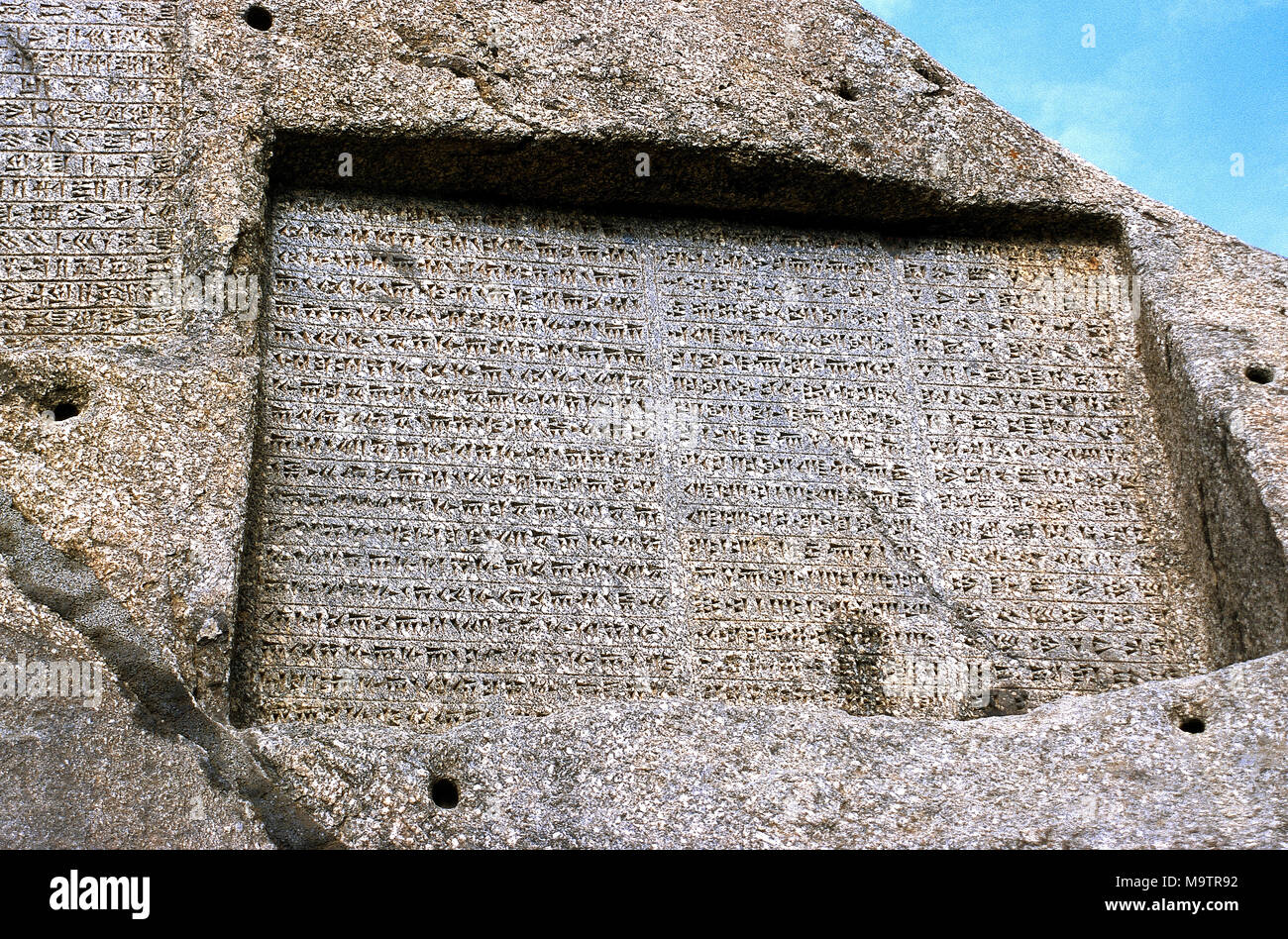 Achaemenid Empire. Ganjnameh. Ancient inscription carved in granite in 3 languages: Old Persian, Neo-Babylonian and Neo-Elamite, written by order of the sovereigns Darius the Great (521-485 BC) and Xerxes the Great (485-65 BC). Cuneiform alphabets. Near Hamedan, Islamic Republic of Iran. Stock Photohttps://www.alamy.com/image-license-details/?v=1https://www.alamy.com/achaemenid-empire-ganjnameh-ancient-inscription-carved-in-granite-in-3-languages-old-persian-neo-babylonian-and-neo-elamite-written-by-order-of-the-sovereigns-darius-the-great-521-485-bc-and-xerxes-the-great-485-65-bc-cuneiform-alphabets-near-hamedan-islamic-republic-of-iran-image178180718.html
Achaemenid Empire. Ganjnameh. Ancient inscription carved in granite in 3 languages: Old Persian, Neo-Babylonian and Neo-Elamite, written by order of the sovereigns Darius the Great (521-485 BC) and Xerxes the Great (485-65 BC). Cuneiform alphabets. Near Hamedan, Islamic Republic of Iran. Stock Photohttps://www.alamy.com/image-license-details/?v=1https://www.alamy.com/achaemenid-empire-ganjnameh-ancient-inscription-carved-in-granite-in-3-languages-old-persian-neo-babylonian-and-neo-elamite-written-by-order-of-the-sovereigns-darius-the-great-521-485-bc-and-xerxes-the-great-485-65-bc-cuneiform-alphabets-near-hamedan-islamic-republic-of-iran-image178180718.htmlRMM9TR92–Achaemenid Empire. Ganjnameh. Ancient inscription carved in granite in 3 languages: Old Persian, Neo-Babylonian and Neo-Elamite, written by order of the sovereigns Darius the Great (521-485 BC) and Xerxes the Great (485-65 BC). Cuneiform alphabets. Near Hamedan, Islamic Republic of Iran.
 Shutruru stele. Limestone. 7th century BC. Found in the Acropolis of Susa, Iran. Louvre Museum. Paris. France. Stock Photohttps://www.alamy.com/image-license-details/?v=1https://www.alamy.com/stock-photo-shutruru-stele-limestone-7th-century-bc-found-in-the-acropolis-of-89912325.html
Shutruru stele. Limestone. 7th century BC. Found in the Acropolis of Susa, Iran. Louvre Museum. Paris. France. Stock Photohttps://www.alamy.com/image-license-details/?v=1https://www.alamy.com/stock-photo-shutruru-stele-limestone-7th-century-bc-found-in-the-acropolis-of-89912325.htmlRMF67T2D–Shutruru stele. Limestone. 7th century BC. Found in the Acropolis of Susa, Iran. Louvre Museum. Paris. France.
 Inscription Carved In Bisutun Rock Stock Photohttps://www.alamy.com/image-license-details/?v=1https://www.alamy.com/stock-photo-inscription-carved-in-bisutun-rock-56692117.html
Inscription Carved In Bisutun Rock Stock Photohttps://www.alamy.com/image-license-details/?v=1https://www.alamy.com/stock-photo-inscription-carved-in-bisutun-rock-56692117.htmlRMD86FAD–Inscription Carved In Bisutun Rock
 Jar with the name of Xerxes the Great in four languages 485–465 BC Late Period The inscription reads 'Xerxes, the Great King' in four languages--Egyptian, Old Persian, Elamite, and Neo-Babylonian--using two different scripts, hieroglyphs and cuneiform.. Jar with the name of Xerxes the Great in four languages. 485–465 BC. Travertine (Egyptian alabaster). Late Period. From Egypt. Dynasty 27 Stock Photohttps://www.alamy.com/image-license-details/?v=1https://www.alamy.com/jar-with-the-name-of-xerxes-the-great-in-four-languages-485465-bc-late-period-the-inscription-reads-xerxes-the-great-king-in-four-languages-egyptian-old-persian-elamite-and-neo-babylonian-using-two-different-scripts-hieroglyphs-and-cuneiform-jar-with-the-name-of-xerxes-the-great-in-four-languages-485465-bc-travertine-egyptian-alabaster-late-period-from-egypt-dynasty-27-image457771877.html
Jar with the name of Xerxes the Great in four languages 485–465 BC Late Period The inscription reads 'Xerxes, the Great King' in four languages--Egyptian, Old Persian, Elamite, and Neo-Babylonian--using two different scripts, hieroglyphs and cuneiform.. Jar with the name of Xerxes the Great in four languages. 485–465 BC. Travertine (Egyptian alabaster). Late Period. From Egypt. Dynasty 27 Stock Photohttps://www.alamy.com/image-license-details/?v=1https://www.alamy.com/jar-with-the-name-of-xerxes-the-great-in-four-languages-485465-bc-late-period-the-inscription-reads-xerxes-the-great-king-in-four-languages-egyptian-old-persian-elamite-and-neo-babylonian-using-two-different-scripts-hieroglyphs-and-cuneiform-jar-with-the-name-of-xerxes-the-great-in-four-languages-485465-bc-travertine-egyptian-alabaster-late-period-from-egypt-dynasty-27-image457771877.htmlRM2HGN8KH–Jar with the name of Xerxes the Great in four languages 485–465 BC Late Period The inscription reads 'Xerxes, the Great King' in four languages--Egyptian, Old Persian, Elamite, and Neo-Babylonian--using two different scripts, hieroglyphs and cuneiform.. Jar with the name of Xerxes the Great in four languages. 485–465 BC. Travertine (Egyptian alabaster). Late Period. From Egypt. Dynasty 27
 Pottery depicting a bull, with cuneiform inscriptions dedicated to Inshusinak on its back. It was found at the entrance of Chogha Zanbil ziggurat, near Susa, 2200 BC. The National Museum of Iran. Tehran. Stock Photohttps://www.alamy.com/image-license-details/?v=1https://www.alamy.com/pottery-depicting-a-bull-with-cuneiform-inscriptions-dedicated-to-inshusinak-on-its-back-it-was-found-at-the-entrance-of-chogha-zanbil-ziggurat-near-susa-2200-bc-the-national-museum-of-iran-tehran-image179748501.html
Pottery depicting a bull, with cuneiform inscriptions dedicated to Inshusinak on its back. It was found at the entrance of Chogha Zanbil ziggurat, near Susa, 2200 BC. The National Museum of Iran. Tehran. Stock Photohttps://www.alamy.com/image-license-details/?v=1https://www.alamy.com/pottery-depicting-a-bull-with-cuneiform-inscriptions-dedicated-to-inshusinak-on-its-back-it-was-found-at-the-entrance-of-chogha-zanbil-ziggurat-near-susa-2200-bc-the-national-museum-of-iran-tehran-image179748501.htmlRMMCC719–Pottery depicting a bull, with cuneiform inscriptions dedicated to Inshusinak on its back. It was found at the entrance of Chogha Zanbil ziggurat, near Susa, 2200 BC. The National Museum of Iran. Tehran.
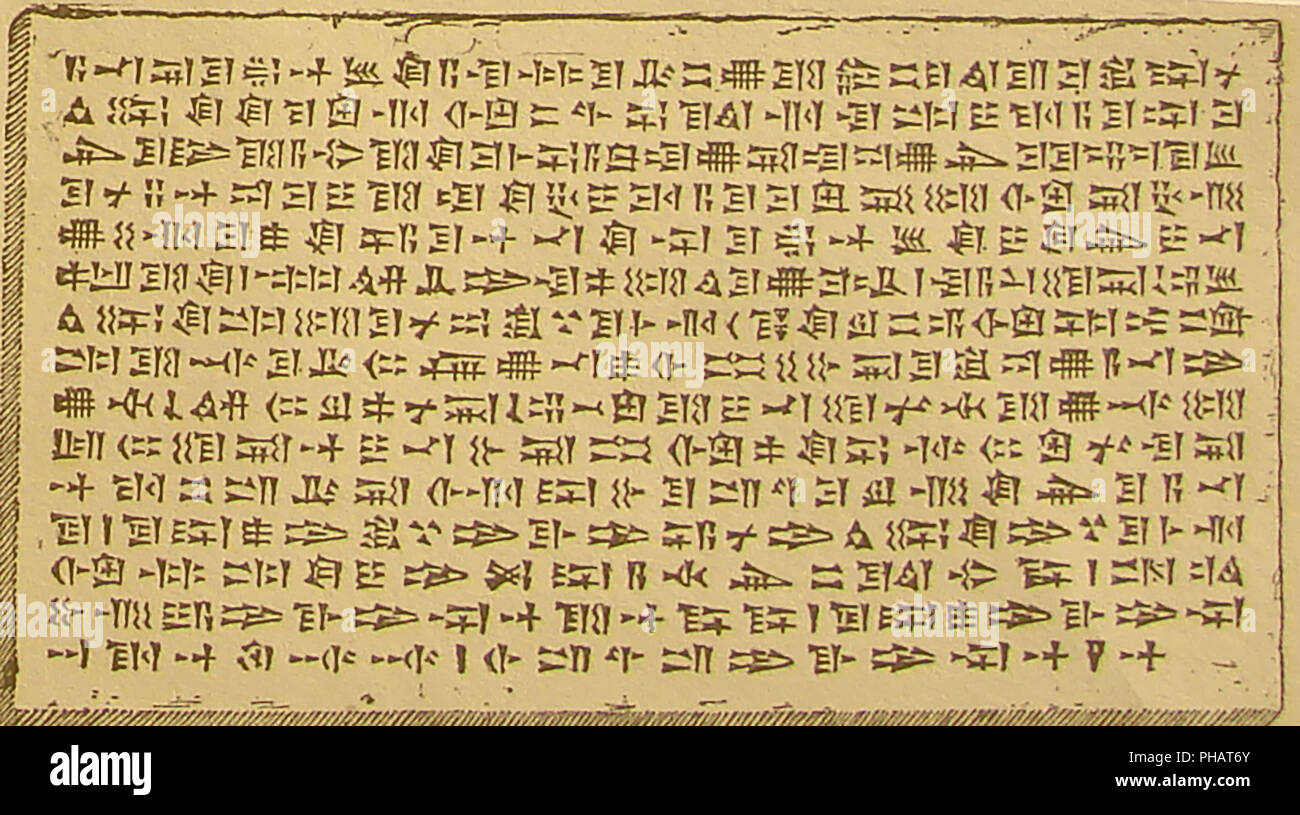 A 1930's illustration of cuneiform writing from a document giving an account of the capture of Babylon Stock Photohttps://www.alamy.com/image-license-details/?v=1https://www.alamy.com/a-1930s-illustration-of-cuneiform-writing-from-a-document-giving-an-account-of-the-capture-of-babylon-image217212099.html
A 1930's illustration of cuneiform writing from a document giving an account of the capture of Babylon Stock Photohttps://www.alamy.com/image-license-details/?v=1https://www.alamy.com/a-1930s-illustration-of-cuneiform-writing-from-a-document-giving-an-account-of-the-capture-of-babylon-image217212099.htmlRMPHAT6Y–A 1930's illustration of cuneiform writing from a document giving an account of the capture of Babylon
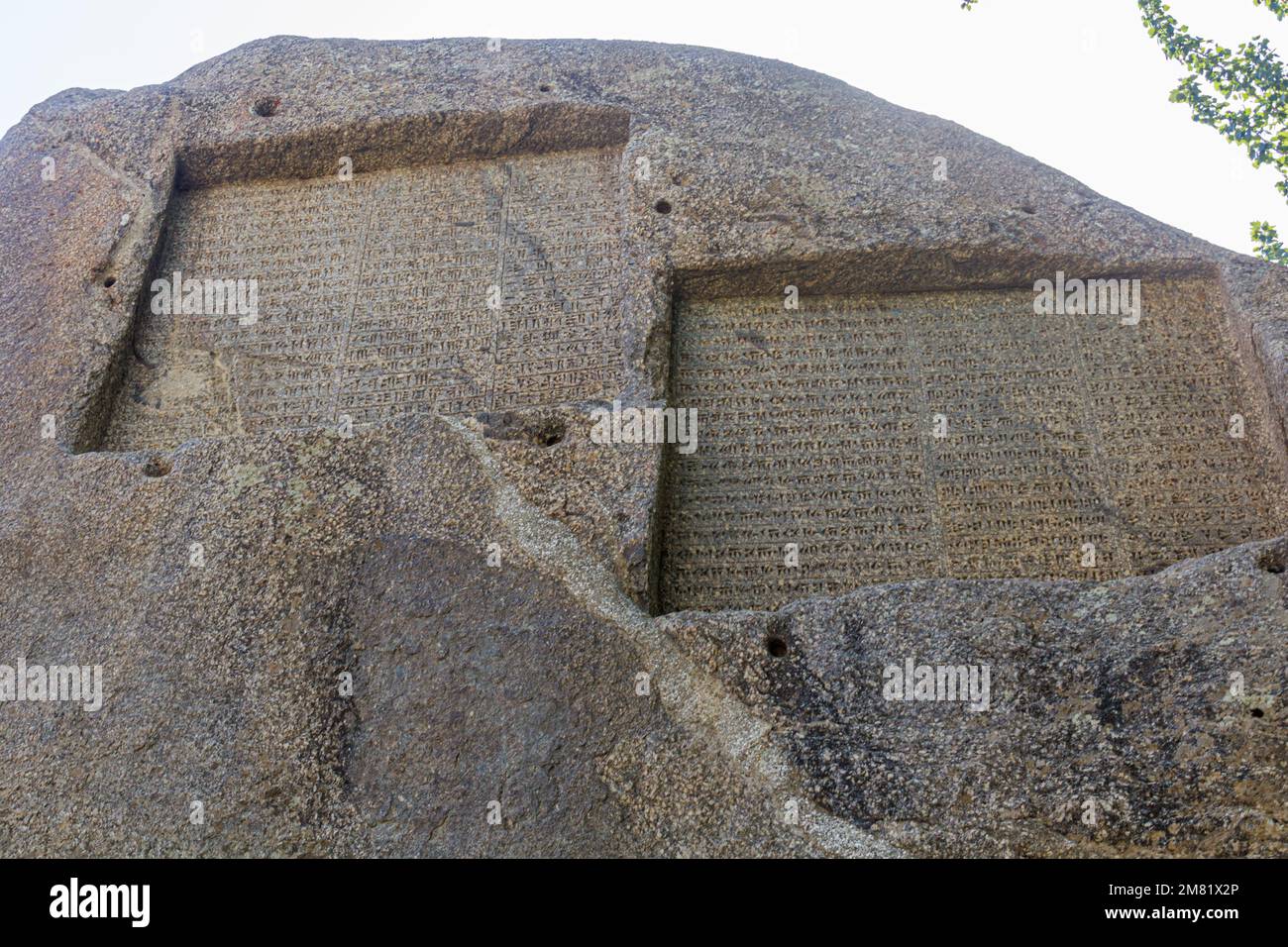 Ganjnameh cuneiform inscriptions near Hamadan, Iran Stock Photohttps://www.alamy.com/image-license-details/?v=1https://www.alamy.com/ganjnameh-cuneiform-inscriptions-near-hamadan-iran-image504060334.html
Ganjnameh cuneiform inscriptions near Hamadan, Iran Stock Photohttps://www.alamy.com/image-license-details/?v=1https://www.alamy.com/ganjnameh-cuneiform-inscriptions-near-hamadan-iran-image504060334.htmlRF2M81X2P–Ganjnameh cuneiform inscriptions near Hamadan, Iran
 Cuneiform tablet impressed with seals- administrative document inscribed in Achaemenid Elamite MET DP254534 323243 Stock Photohttps://www.alamy.com/image-license-details/?v=1https://www.alamy.com/stock-image-cuneiform-tablet-impressed-with-seals-administrative-document-inscribed-168331288.html
Cuneiform tablet impressed with seals- administrative document inscribed in Achaemenid Elamite MET DP254534 323243 Stock Photohttps://www.alamy.com/image-license-details/?v=1https://www.alamy.com/stock-image-cuneiform-tablet-impressed-with-seals-administrative-document-inscribed-168331288.htmlRMKNT47M–Cuneiform tablet impressed with seals- administrative document inscribed in Achaemenid Elamite MET DP254534 323243
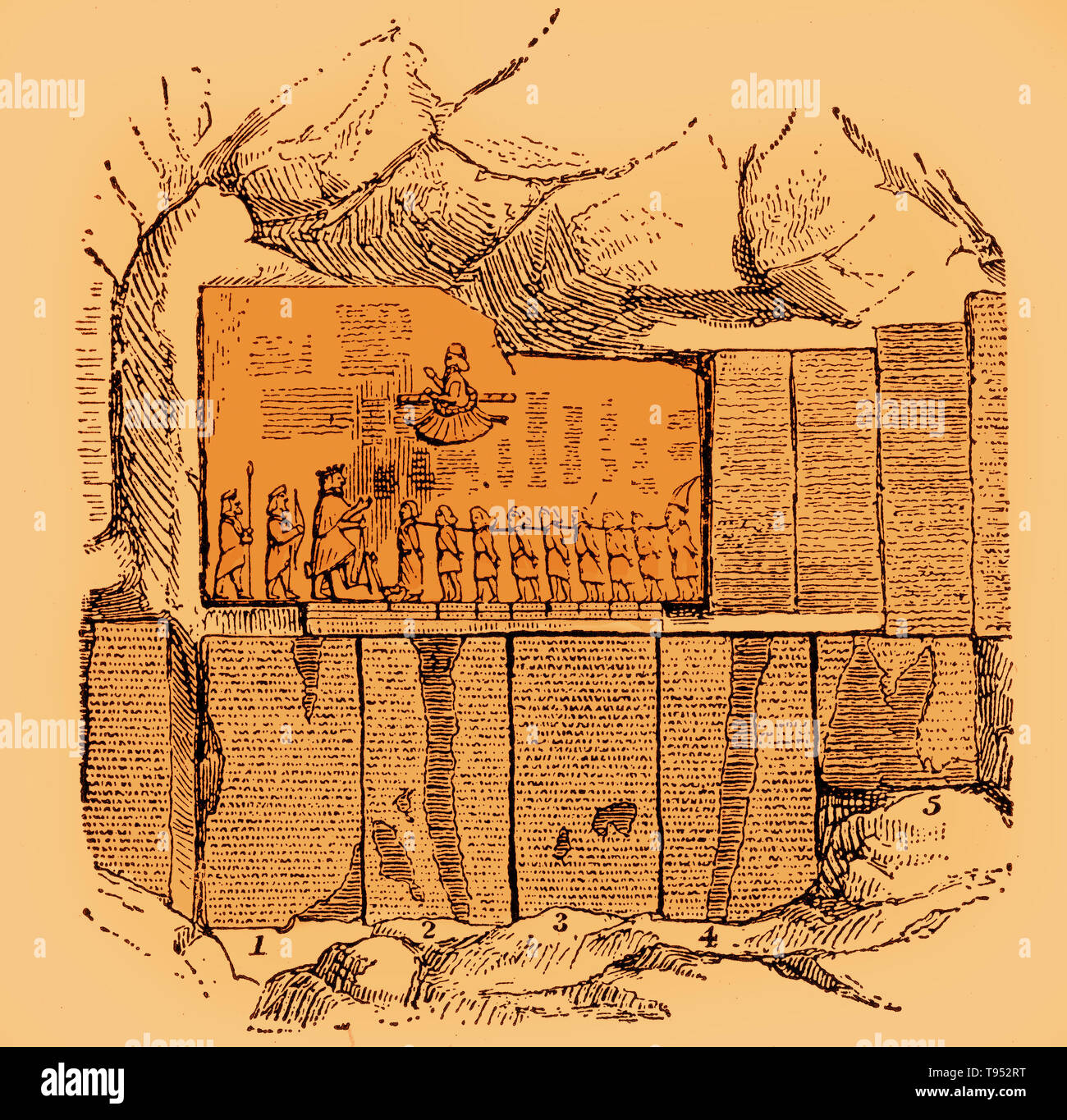 The Behistun Inscription is a multilingual inscription and large rock relief on a cliff at Mount Behistun in the Kermanshah Province of Iran, near the city of Kermanshah in western Iran. Authored by Darius the Great sometime between 522 BC and 486 BC, the inscription begins with a brief autobiography of Darius, including his ancestry and lineage. Stock Photohttps://www.alamy.com/image-license-details/?v=1https://www.alamy.com/the-behistun-inscription-is-a-multilingual-inscription-and-large-rock-relief-on-a-cliff-at-mount-behistun-in-the-kermanshah-province-of-iran-near-the-city-of-kermanshah-in-western-iran-authored-by-darius-the-great-sometime-between-522-bc-and-486-bc-the-inscription-begins-with-a-brief-autobiography-of-darius-including-his-ancestry-and-lineage-image246589052.html
The Behistun Inscription is a multilingual inscription and large rock relief on a cliff at Mount Behistun in the Kermanshah Province of Iran, near the city of Kermanshah in western Iran. Authored by Darius the Great sometime between 522 BC and 486 BC, the inscription begins with a brief autobiography of Darius, including his ancestry and lineage. Stock Photohttps://www.alamy.com/image-license-details/?v=1https://www.alamy.com/the-behistun-inscription-is-a-multilingual-inscription-and-large-rock-relief-on-a-cliff-at-mount-behistun-in-the-kermanshah-province-of-iran-near-the-city-of-kermanshah-in-western-iran-authored-by-darius-the-great-sometime-between-522-bc-and-486-bc-the-inscription-begins-with-a-brief-autobiography-of-darius-including-his-ancestry-and-lineage-image246589052.htmlRMT952RT–The Behistun Inscription is a multilingual inscription and large rock relief on a cliff at Mount Behistun in the Kermanshah Province of Iran, near the city of Kermanshah in western Iran. Authored by Darius the Great sometime between 522 BC and 486 BC, the inscription begins with a brief autobiography of Darius, including his ancestry and lineage.
 A brick with a cuneiform inscription. The name of the Elamite king Silhak-Insusinak (ca. 1150-1100 BC) is called., Building element, inscription, pottery, L 31.5 cm, W 34 cm, H 10.5 cm (in the card index H 7.5 cm) , Middle Elamite Period 1150-1100 BC, Iran Stock Photohttps://www.alamy.com/image-license-details/?v=1https://www.alamy.com/a-brick-with-a-cuneiform-inscription-the-name-of-the-elamite-king-silhak-insusinak-ca-1150-1100-bc-is-called-building-element-inscription-pottery-l-315-cm-w-34-cm-h-105-cm-in-the-card-index-h-75-cm-middle-elamite-period-1150-1100-bc-iran-image344516660.html
A brick with a cuneiform inscription. The name of the Elamite king Silhak-Insusinak (ca. 1150-1100 BC) is called., Building element, inscription, pottery, L 31.5 cm, W 34 cm, H 10.5 cm (in the card index H 7.5 cm) , Middle Elamite Period 1150-1100 BC, Iran Stock Photohttps://www.alamy.com/image-license-details/?v=1https://www.alamy.com/a-brick-with-a-cuneiform-inscription-the-name-of-the-elamite-king-silhak-insusinak-ca-1150-1100-bc-is-called-building-element-inscription-pottery-l-315-cm-w-34-cm-h-105-cm-in-the-card-index-h-75-cm-middle-elamite-period-1150-1100-bc-iran-image344516660.htmlRM2B0E2EC–A brick with a cuneiform inscription. The name of the Elamite king Silhak-Insusinak (ca. 1150-1100 BC) is called., Building element, inscription, pottery, L 31.5 cm, W 34 cm, H 10.5 cm (in the card index H 7.5 cm) , Middle Elamite Period 1150-1100 BC, Iran
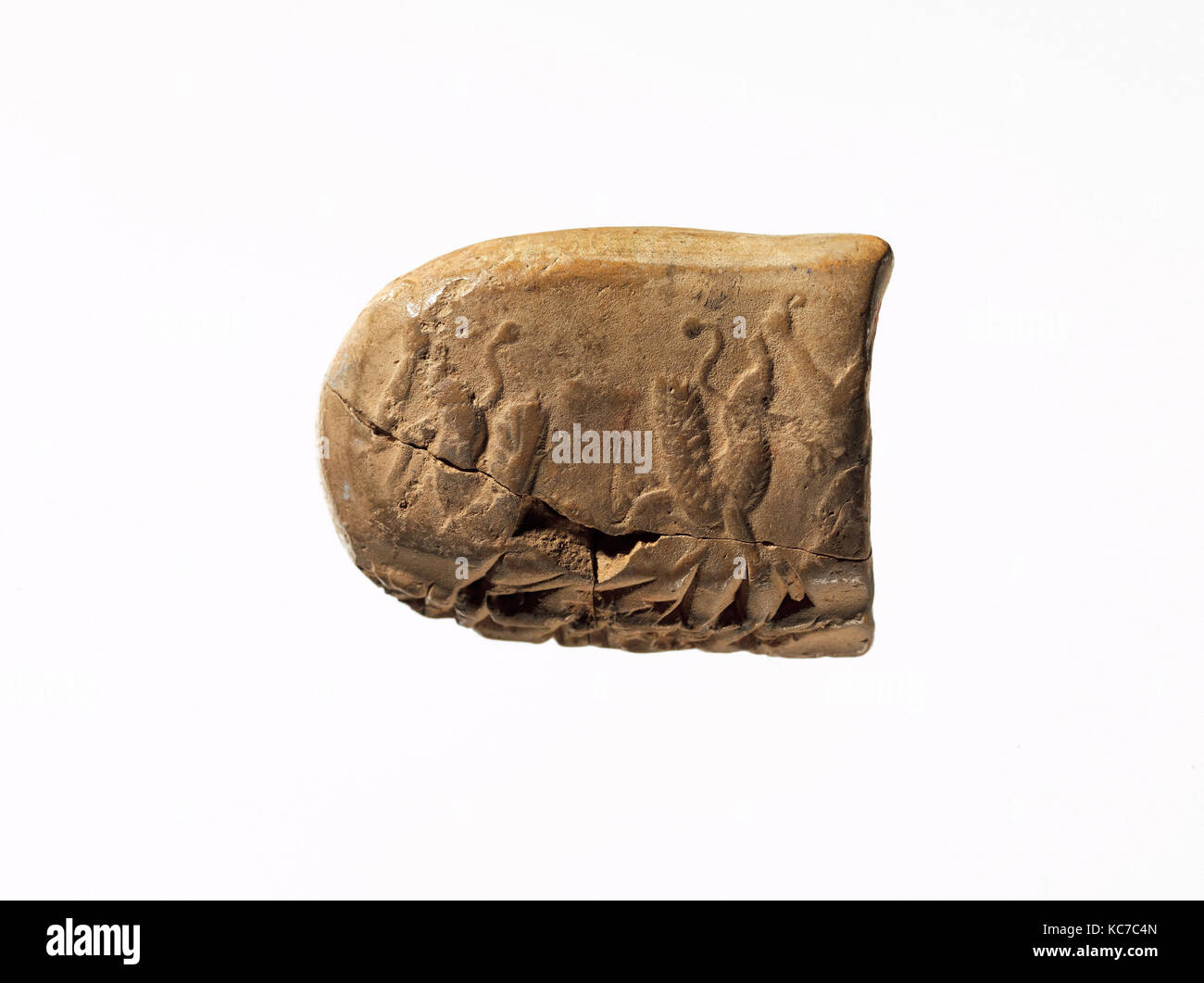 Cuneiform tablet impressed with seals: administrative document inscribed in Achaemenid Elamite, ca. 500 B.C Stock Photohttps://www.alamy.com/image-license-details/?v=1https://www.alamy.com/stock-image-cuneiform-tablet-impressed-with-seals-administrative-document-inscribed-162432389.html
Cuneiform tablet impressed with seals: administrative document inscribed in Achaemenid Elamite, ca. 500 B.C Stock Photohttps://www.alamy.com/image-license-details/?v=1https://www.alamy.com/stock-image-cuneiform-tablet-impressed-with-seals-administrative-document-inscribed-162432389.htmlRMKC7C4N–Cuneiform tablet impressed with seals: administrative document inscribed in Achaemenid Elamite, ca. 500 B.C
 Chogha Zanbil, brick with cuneiform inscription, Ziggrat(ziqqrat) of the ancient Elamites, Khuzestan Province, Iran, Persia, Western Asia, Asia Stock Photohttps://www.alamy.com/image-license-details/?v=1https://www.alamy.com/chogha-zanbil-brick-with-cuneiform-inscription-ziggratziqqrat-of-the-ancient-elamites-khuzestan-province-iran-persia-western-asia-asia-image435498620.html
Chogha Zanbil, brick with cuneiform inscription, Ziggrat(ziqqrat) of the ancient Elamites, Khuzestan Province, Iran, Persia, Western Asia, Asia Stock Photohttps://www.alamy.com/image-license-details/?v=1https://www.alamy.com/chogha-zanbil-brick-with-cuneiform-inscription-ziggratziqqrat-of-the-ancient-elamites-khuzestan-province-iran-persia-western-asia-asia-image435498620.htmlRM2G8EJX4–Chogha Zanbil, brick with cuneiform inscription, Ziggrat(ziqqrat) of the ancient Elamites, Khuzestan Province, Iran, Persia, Western Asia, Asia
 A brick with a cuneiform inscription. The name of Silhak-Insusinak, king of Elam (ca. 1150-1100 BC), is called., Building element, inscription, pottery, L 31 cm, W 32 cm, H 10 cm, Middle Elamite Period 1150-1100 BC, Iran Stock Photohttps://www.alamy.com/image-license-details/?v=1https://www.alamy.com/a-brick-with-a-cuneiform-inscription-the-name-of-silhak-insusinak-king-of-elam-ca-1150-1100-bc-is-called-building-element-inscription-pottery-l-31-cm-w-32-cm-h-10-cm-middle-elamite-period-1150-1100-bc-iran-image344518064.html
A brick with a cuneiform inscription. The name of Silhak-Insusinak, king of Elam (ca. 1150-1100 BC), is called., Building element, inscription, pottery, L 31 cm, W 32 cm, H 10 cm, Middle Elamite Period 1150-1100 BC, Iran Stock Photohttps://www.alamy.com/image-license-details/?v=1https://www.alamy.com/a-brick-with-a-cuneiform-inscription-the-name-of-silhak-insusinak-king-of-elam-ca-1150-1100-bc-is-called-building-element-inscription-pottery-l-31-cm-w-32-cm-h-10-cm-middle-elamite-period-1150-1100-bc-iran-image344518064.htmlRM2B0E48G–A brick with a cuneiform inscription. The name of Silhak-Insusinak, king of Elam (ca. 1150-1100 BC), is called., Building element, inscription, pottery, L 31 cm, W 32 cm, H 10 cm, Middle Elamite Period 1150-1100 BC, Iran
 Cuneiform tablet impressed with seals: administrative document inscribed in Achaemenid Elamite. Culture: Achaemenid. Dimensions: 0.98 x 1.38 x .67 in. (2.49 x 3.51 x 1.7 cm). Date: ca. 500 B.C.. Museum: Metropolitan Museum of Art, New York, USA. Stock Photohttps://www.alamy.com/image-license-details/?v=1https://www.alamy.com/cuneiform-tablet-impressed-with-seals-administrative-document-inscribed-in-achaemenid-elamite-culture-achaemenid-dimensions-098-x-138-x-67-in-249-x-351-x-17-cm-date-ca-500-bc-museum-metropolitan-museum-of-art-new-york-usa-image213261416.html
Cuneiform tablet impressed with seals: administrative document inscribed in Achaemenid Elamite. Culture: Achaemenid. Dimensions: 0.98 x 1.38 x .67 in. (2.49 x 3.51 x 1.7 cm). Date: ca. 500 B.C.. Museum: Metropolitan Museum of Art, New York, USA. Stock Photohttps://www.alamy.com/image-license-details/?v=1https://www.alamy.com/cuneiform-tablet-impressed-with-seals-administrative-document-inscribed-in-achaemenid-elamite-culture-achaemenid-dimensions-098-x-138-x-67-in-249-x-351-x-17-cm-date-ca-500-bc-museum-metropolitan-museum-of-art-new-york-usa-image213261416.htmlRMPAXW34–Cuneiform tablet impressed with seals: administrative document inscribed in Achaemenid Elamite. Culture: Achaemenid. Dimensions: 0.98 x 1.38 x .67 in. (2.49 x 3.51 x 1.7 cm). Date: ca. 500 B.C.. Museum: Metropolitan Museum of Art, New York, USA.
 A brick with a cuneiform inscription. The name of Silhak-Insusinak, king of Elam (ca. 1150-1100 BC), is called., Building element, inscription, pottery, L 33 cm, W 33 cm, H 9 cm, Middle Elamite Period 1150-1100 BC, Iran Stock Photohttps://www.alamy.com/image-license-details/?v=1https://www.alamy.com/a-brick-with-a-cuneiform-inscription-the-name-of-silhak-insusinak-king-of-elam-ca-1150-1100-bc-is-called-building-element-inscription-pottery-l-33-cm-w-33-cm-h-9-cm-middle-elamite-period-1150-1100-bc-iran-image344516305.html
A brick with a cuneiform inscription. The name of Silhak-Insusinak, king of Elam (ca. 1150-1100 BC), is called., Building element, inscription, pottery, L 33 cm, W 33 cm, H 9 cm, Middle Elamite Period 1150-1100 BC, Iran Stock Photohttps://www.alamy.com/image-license-details/?v=1https://www.alamy.com/a-brick-with-a-cuneiform-inscription-the-name-of-silhak-insusinak-king-of-elam-ca-1150-1100-bc-is-called-building-element-inscription-pottery-l-33-cm-w-33-cm-h-9-cm-middle-elamite-period-1150-1100-bc-iran-image344516305.htmlRM2B0E21N–A brick with a cuneiform inscription. The name of Silhak-Insusinak, king of Elam (ca. 1150-1100 BC), is called., Building element, inscription, pottery, L 33 cm, W 33 cm, H 9 cm, Middle Elamite Period 1150-1100 BC, Iran
 Shutruru stele. Limestone. 7th century BC. Found in the Acropolis of Susa, Iran. Louvre Museum. Paris. France. Detail. Stock Photohttps://www.alamy.com/image-license-details/?v=1https://www.alamy.com/stock-photo-shutruru-stele-limestone-7th-century-bc-found-in-the-acropolis-of-89912328.html
Shutruru stele. Limestone. 7th century BC. Found in the Acropolis of Susa, Iran. Louvre Museum. Paris. France. Detail. Stock Photohttps://www.alamy.com/image-license-details/?v=1https://www.alamy.com/stock-photo-shutruru-stele-limestone-7th-century-bc-found-in-the-acropolis-of-89912328.htmlRMF67T2G–Shutruru stele. Limestone. 7th century BC. Found in the Acropolis of Susa, Iran. Louvre Museum. Paris. France. Detail.
 Ganjnameh cuneiform inscriptions near Hamadan, Iran Stock Photohttps://www.alamy.com/image-license-details/?v=1https://www.alamy.com/ganjnameh-cuneiform-inscriptions-near-hamadan-iran-image504060258.html
Ganjnameh cuneiform inscriptions near Hamadan, Iran Stock Photohttps://www.alamy.com/image-license-details/?v=1https://www.alamy.com/ganjnameh-cuneiform-inscriptions-near-hamadan-iran-image504060258.htmlRF2M81X02–Ganjnameh cuneiform inscriptions near Hamadan, Iran
 Cuneiform tablet impressed with seals- administrative document inscribed in Achaemenid Elamite MET DP254535 323243 Stock Photohttps://www.alamy.com/image-license-details/?v=1https://www.alamy.com/stock-image-cuneiform-tablet-impressed-with-seals-administrative-document-inscribed-168032876.html
Cuneiform tablet impressed with seals- administrative document inscribed in Achaemenid Elamite MET DP254535 323243 Stock Photohttps://www.alamy.com/image-license-details/?v=1https://www.alamy.com/stock-image-cuneiform-tablet-impressed-with-seals-administrative-document-inscribed-168032876.htmlRMKNAFJ4–Cuneiform tablet impressed with seals- administrative document inscribed in Achaemenid Elamite MET DP254535 323243
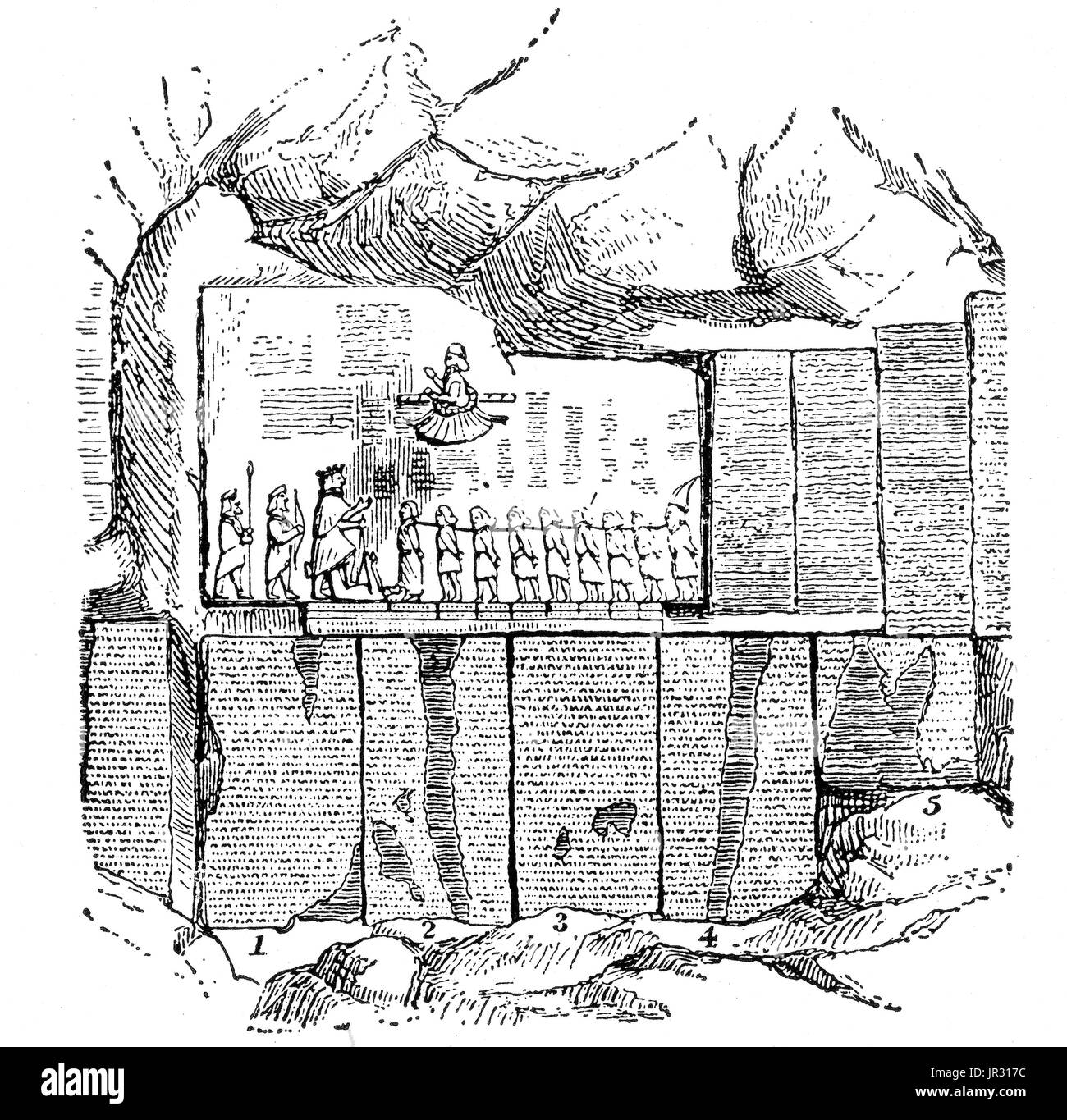 The Behistun Inscription is a multilingual inscription and large rock relief on a cliff at Mount Behistun in the Kermanshah Province of Iran, near the city of Kermanshah in western Iran. Authored by Darius the Great sometime between 522 BC and 486 BC, the inscription begins with a brief autobiography of Darius, including his ancestry and lineage. Later in the inscription, Darius provides a lengthy sequence of events following the deaths of Cyrus the Great and Cambyses II in which he fought nineteen battles in a period of one year to put down multiple rebellions throughout the Persian Empire. D Stock Photohttps://www.alamy.com/image-license-details/?v=1https://www.alamy.com/the-behistun-inscription-is-a-multilingual-inscription-and-large-rock-image151886880.html
The Behistun Inscription is a multilingual inscription and large rock relief on a cliff at Mount Behistun in the Kermanshah Province of Iran, near the city of Kermanshah in western Iran. Authored by Darius the Great sometime between 522 BC and 486 BC, the inscription begins with a brief autobiography of Darius, including his ancestry and lineage. Later in the inscription, Darius provides a lengthy sequence of events following the deaths of Cyrus the Great and Cambyses II in which he fought nineteen battles in a period of one year to put down multiple rebellions throughout the Persian Empire. D Stock Photohttps://www.alamy.com/image-license-details/?v=1https://www.alamy.com/the-behistun-inscription-is-a-multilingual-inscription-and-large-rock-image151886880.htmlRMJR317C–The Behistun Inscription is a multilingual inscription and large rock relief on a cliff at Mount Behistun in the Kermanshah Province of Iran, near the city of Kermanshah in western Iran. Authored by Darius the Great sometime between 522 BC and 486 BC, the inscription begins with a brief autobiography of Darius, including his ancestry and lineage. Later in the inscription, Darius provides a lengthy sequence of events following the deaths of Cyrus the Great and Cambyses II in which he fought nineteen battles in a period of one year to put down multiple rebellions throughout the Persian Empire. D
 Chogha Zanbil, brick with cuneiform inscription, Ziggrat(ziqqrat) of the ancient Elamites, Khuzestan Province, Iran, Persia, Western Asia, Asia Stock Photohttps://www.alamy.com/image-license-details/?v=1https://www.alamy.com/chogha-zanbil-brick-with-cuneiform-inscription-ziggratziqqrat-of-the-ancient-elamites-khuzestan-province-iran-persia-western-asia-asia-image435498621.html
Chogha Zanbil, brick with cuneiform inscription, Ziggrat(ziqqrat) of the ancient Elamites, Khuzestan Province, Iran, Persia, Western Asia, Asia Stock Photohttps://www.alamy.com/image-license-details/?v=1https://www.alamy.com/chogha-zanbil-brick-with-cuneiform-inscription-ziggratziqqrat-of-the-ancient-elamites-khuzestan-province-iran-persia-western-asia-asia-image435498621.htmlRM2G8EJX5–Chogha Zanbil, brick with cuneiform inscription, Ziggrat(ziqqrat) of the ancient Elamites, Khuzestan Province, Iran, Persia, Western Asia, Asia
 Achaemenid Empire. Ganjnameh. Ancient inscription carved in granite in 3 languages: Old Persian, Neo-Babylonian and Neo-Elamite, written by order of the sovereigns Darius the Great (521-485 BC) and Xerxes the Great (485-65 BC). Cuneiform alphabets. Near Hamedan, Islamic Republic of Iran. Stock Photohttps://www.alamy.com/image-license-details/?v=1https://www.alamy.com/achaemenid-empire-ganjnameh-ancient-inscription-carved-in-granite-in-3-languages-old-persian-neo-babylonian-and-neo-elamite-written-by-order-of-the-sovereigns-darius-the-great-521-485-bc-and-xerxes-the-great-485-65-bc-cuneiform-alphabets-near-hamedan-islamic-republic-of-iran-image220340583.html
Achaemenid Empire. Ganjnameh. Ancient inscription carved in granite in 3 languages: Old Persian, Neo-Babylonian and Neo-Elamite, written by order of the sovereigns Darius the Great (521-485 BC) and Xerxes the Great (485-65 BC). Cuneiform alphabets. Near Hamedan, Islamic Republic of Iran. Stock Photohttps://www.alamy.com/image-license-details/?v=1https://www.alamy.com/achaemenid-empire-ganjnameh-ancient-inscription-carved-in-granite-in-3-languages-old-persian-neo-babylonian-and-neo-elamite-written-by-order-of-the-sovereigns-darius-the-great-521-485-bc-and-xerxes-the-great-485-65-bc-cuneiform-alphabets-near-hamedan-islamic-republic-of-iran-image220340583.htmlRMPPDAJF–Achaemenid Empire. Ganjnameh. Ancient inscription carved in granite in 3 languages: Old Persian, Neo-Babylonian and Neo-Elamite, written by order of the sovereigns Darius the Great (521-485 BC) and Xerxes the Great (485-65 BC). Cuneiform alphabets. Near Hamedan, Islamic Republic of Iran.
 A brick with a cuneiform inscription. The name of Silhak-Insusinak, king of Elam (ca. 1150-1100 BC), is called., Building element, inscription, pottery, L 32.5 cm, W 33 cm, H 9.5 cm, Middle Elamite Period 1150-1100 BC, Iran Stock Photohttps://www.alamy.com/image-license-details/?v=1https://www.alamy.com/a-brick-with-a-cuneiform-inscription-the-name-of-silhak-insusinak-king-of-elam-ca-1150-1100-bc-is-called-building-element-inscription-pottery-l-325-cm-w-33-cm-h-95-cm-middle-elamite-period-1150-1100-bc-iran-image344516597.html
A brick with a cuneiform inscription. The name of Silhak-Insusinak, king of Elam (ca. 1150-1100 BC), is called., Building element, inscription, pottery, L 32.5 cm, W 33 cm, H 9.5 cm, Middle Elamite Period 1150-1100 BC, Iran Stock Photohttps://www.alamy.com/image-license-details/?v=1https://www.alamy.com/a-brick-with-a-cuneiform-inscription-the-name-of-silhak-insusinak-king-of-elam-ca-1150-1100-bc-is-called-building-element-inscription-pottery-l-325-cm-w-33-cm-h-95-cm-middle-elamite-period-1150-1100-bc-iran-image344516597.htmlRM2B0E2C5–A brick with a cuneiform inscription. The name of Silhak-Insusinak, king of Elam (ca. 1150-1100 BC), is called., Building element, inscription, pottery, L 32.5 cm, W 33 cm, H 9.5 cm, Middle Elamite Period 1150-1100 BC, Iran
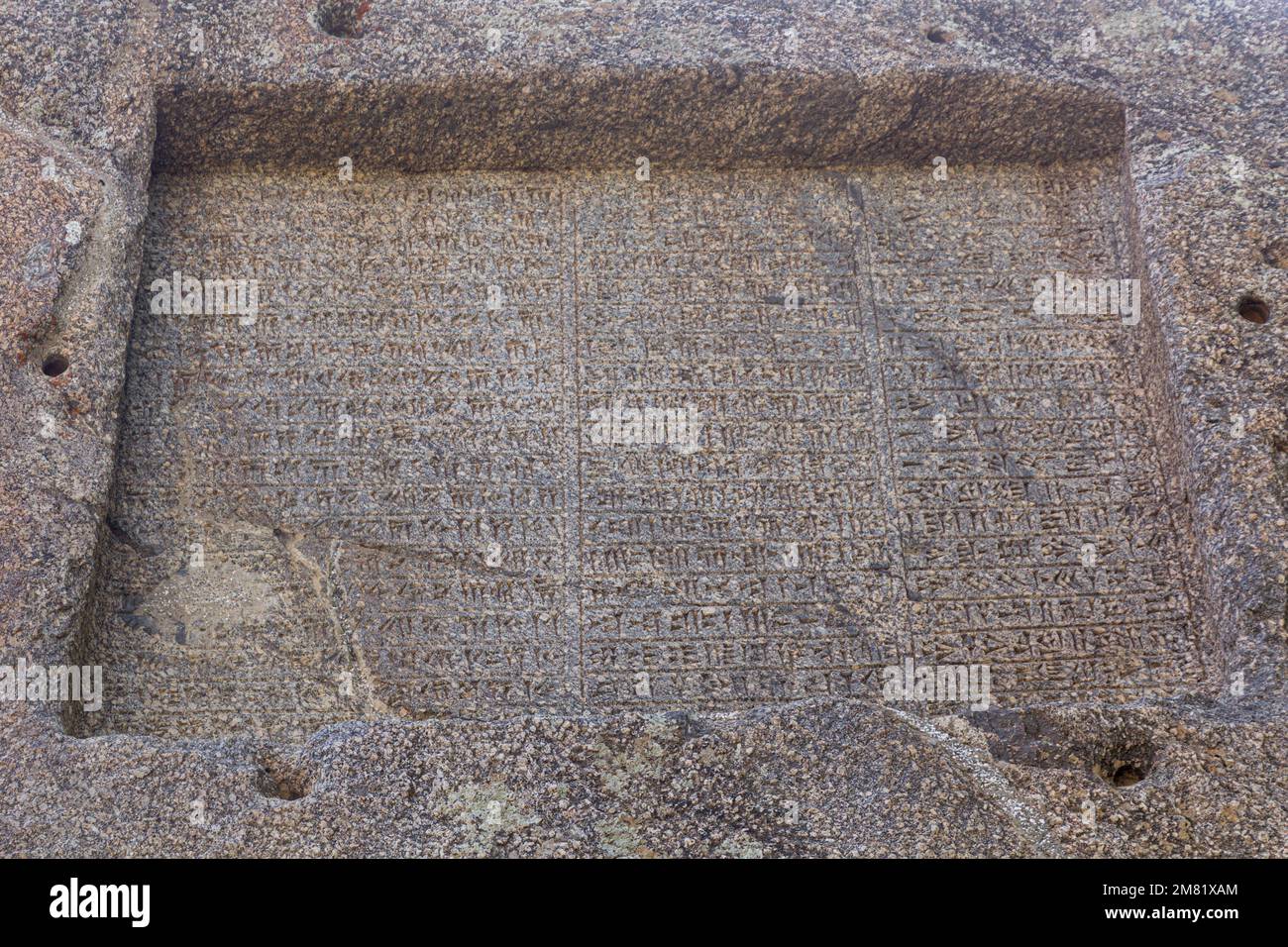 Ganjnameh cuneiform inscriptions near Hamadan, Iran Stock Photohttps://www.alamy.com/image-license-details/?v=1https://www.alamy.com/ganjnameh-cuneiform-inscriptions-near-hamadan-iran-image504060556.html
Ganjnameh cuneiform inscriptions near Hamadan, Iran Stock Photohttps://www.alamy.com/image-license-details/?v=1https://www.alamy.com/ganjnameh-cuneiform-inscriptions-near-hamadan-iran-image504060556.htmlRF2M81XAM–Ganjnameh cuneiform inscriptions near Hamadan, Iran
 Cuneiform tablet impressed with seals- administrative document inscribed in Achaemenid Elamite MET DP254534 323243 Stock Photohttps://www.alamy.com/image-license-details/?v=1https://www.alamy.com/stock-image-cuneiform-tablet-impressed-with-seals-administrative-document-inscribed-168477172.html
Cuneiform tablet impressed with seals- administrative document inscribed in Achaemenid Elamite MET DP254534 323243 Stock Photohttps://www.alamy.com/image-license-details/?v=1https://www.alamy.com/stock-image-cuneiform-tablet-impressed-with-seals-administrative-document-inscribed-168477172.htmlRMKP2P9T–Cuneiform tablet impressed with seals- administrative document inscribed in Achaemenid Elamite MET DP254534 323243
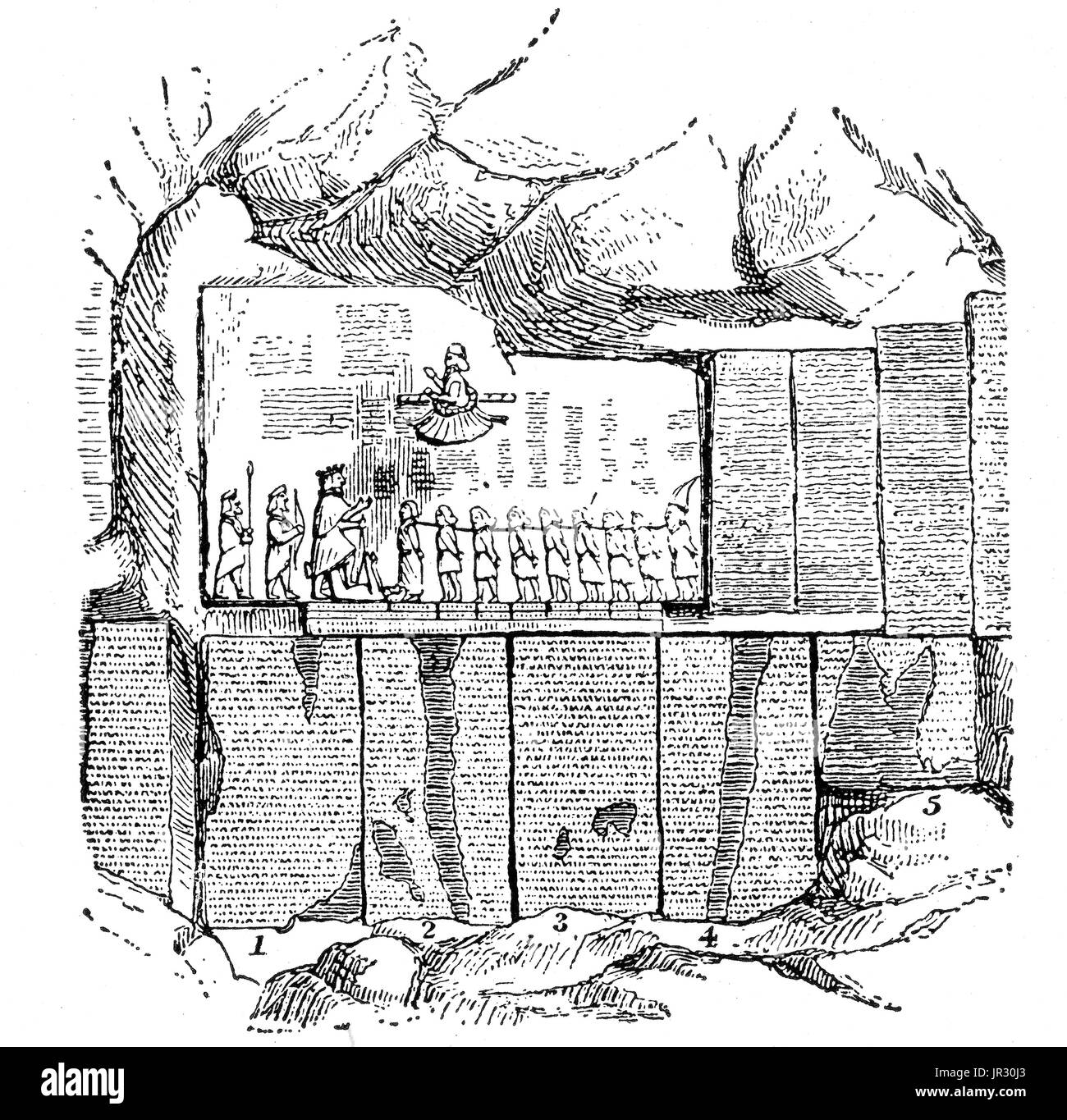 Darius the Great,Behistun Inscription Stock Photohttps://www.alamy.com/image-license-details/?v=1https://www.alamy.com/darius-the-greatbehistun-inscription-image151886395.html
Darius the Great,Behistun Inscription Stock Photohttps://www.alamy.com/image-license-details/?v=1https://www.alamy.com/darius-the-greatbehistun-inscription-image151886395.htmlRMJR30J3–Darius the Great,Behistun Inscription
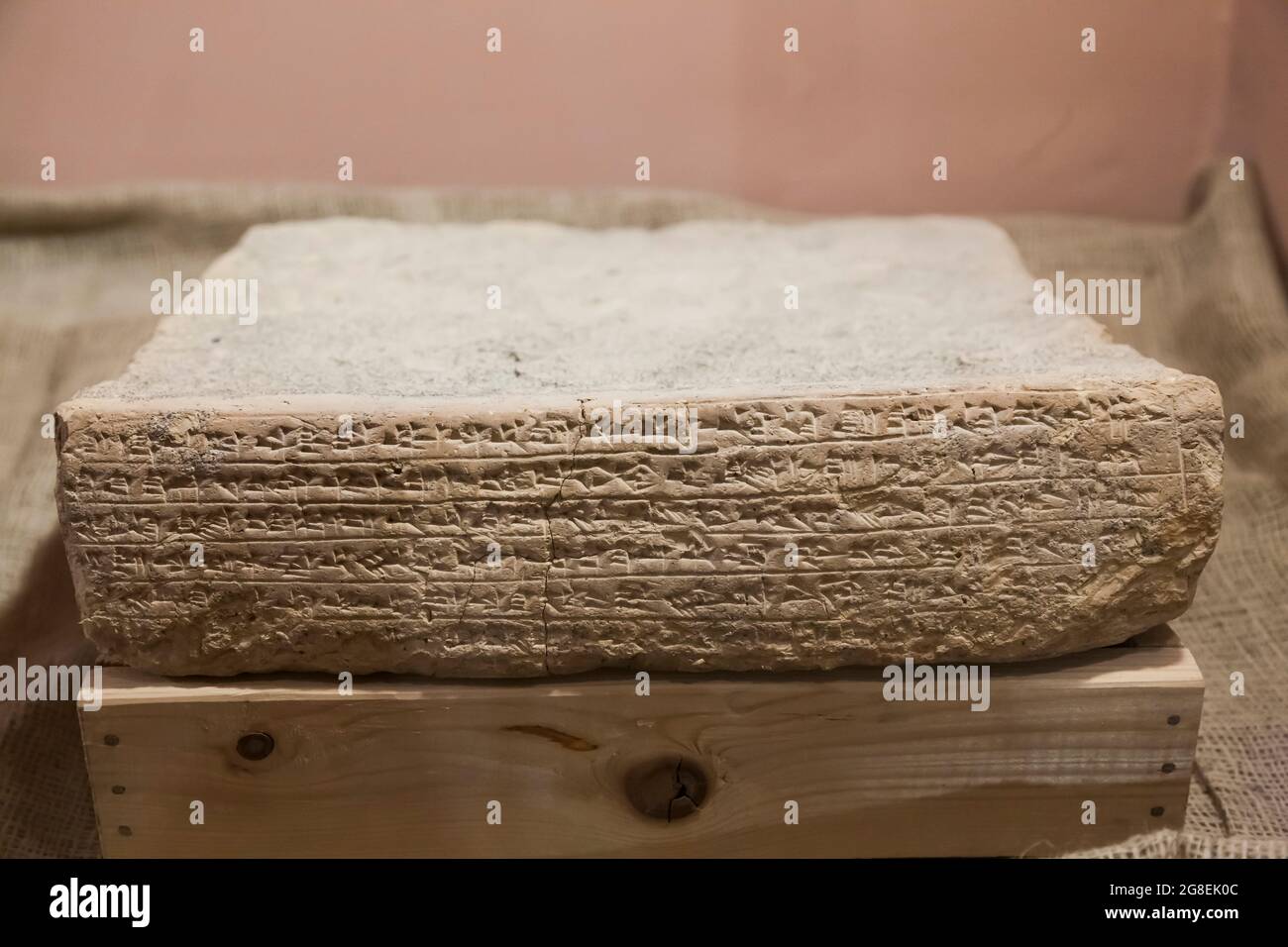 Brick with cuneiform inscription,from Chogha Zanbil, Hafttappeh and Choghazanbil Museum, Khuzestan Province, Iran, Persia, Western Asia, Asia Stock Photohttps://www.alamy.com/image-license-details/?v=1https://www.alamy.com/brick-with-cuneiform-inscriptionfrom-chogha-zanbil-hafttappeh-and-choghazanbil-museum-khuzestan-province-iran-persia-western-asia-asia-image435498684.html
Brick with cuneiform inscription,from Chogha Zanbil, Hafttappeh and Choghazanbil Museum, Khuzestan Province, Iran, Persia, Western Asia, Asia Stock Photohttps://www.alamy.com/image-license-details/?v=1https://www.alamy.com/brick-with-cuneiform-inscriptionfrom-chogha-zanbil-hafttappeh-and-choghazanbil-museum-khuzestan-province-iran-persia-western-asia-asia-image435498684.htmlRM2G8EK0C–Brick with cuneiform inscription,from Chogha Zanbil, Hafttappeh and Choghazanbil Museum, Khuzestan Province, Iran, Persia, Western Asia, Asia
 Ganjnameh. Ancient inscription carved in granite in Alvand Mountain, ordered by Darius the Great (521-485 BC) (left) and by Xerxes the Great (485-465 BC) (right) in three languages, Old Persian, Neo-Babylonian and Neo-Elamite. Near Hamedan. Islamic Republic of Iran. Stock Photohttps://www.alamy.com/image-license-details/?v=1https://www.alamy.com/ganjnameh-ancient-inscription-carved-in-granite-in-alvand-mountain-ordered-by-darius-the-great-521-485-bc-left-and-by-xerxes-the-great-485-465-bc-right-in-three-languages-old-persian-neo-babylonian-and-neo-elamite-near-hamedan-islamic-republic-of-iran-image222666323.html
Ganjnameh. Ancient inscription carved in granite in Alvand Mountain, ordered by Darius the Great (521-485 BC) (left) and by Xerxes the Great (485-465 BC) (right) in three languages, Old Persian, Neo-Babylonian and Neo-Elamite. Near Hamedan. Islamic Republic of Iran. Stock Photohttps://www.alamy.com/image-license-details/?v=1https://www.alamy.com/ganjnameh-ancient-inscription-carved-in-granite-in-alvand-mountain-ordered-by-darius-the-great-521-485-bc-left-and-by-xerxes-the-great-485-465-bc-right-in-three-languages-old-persian-neo-babylonian-and-neo-elamite-near-hamedan-islamic-republic-of-iran-image222666323.htmlRMPX794K–Ganjnameh. Ancient inscription carved in granite in Alvand Mountain, ordered by Darius the Great (521-485 BC) (left) and by Xerxes the Great (485-465 BC) (right) in three languages, Old Persian, Neo-Babylonian and Neo-Elamite. Near Hamedan. Islamic Republic of Iran.
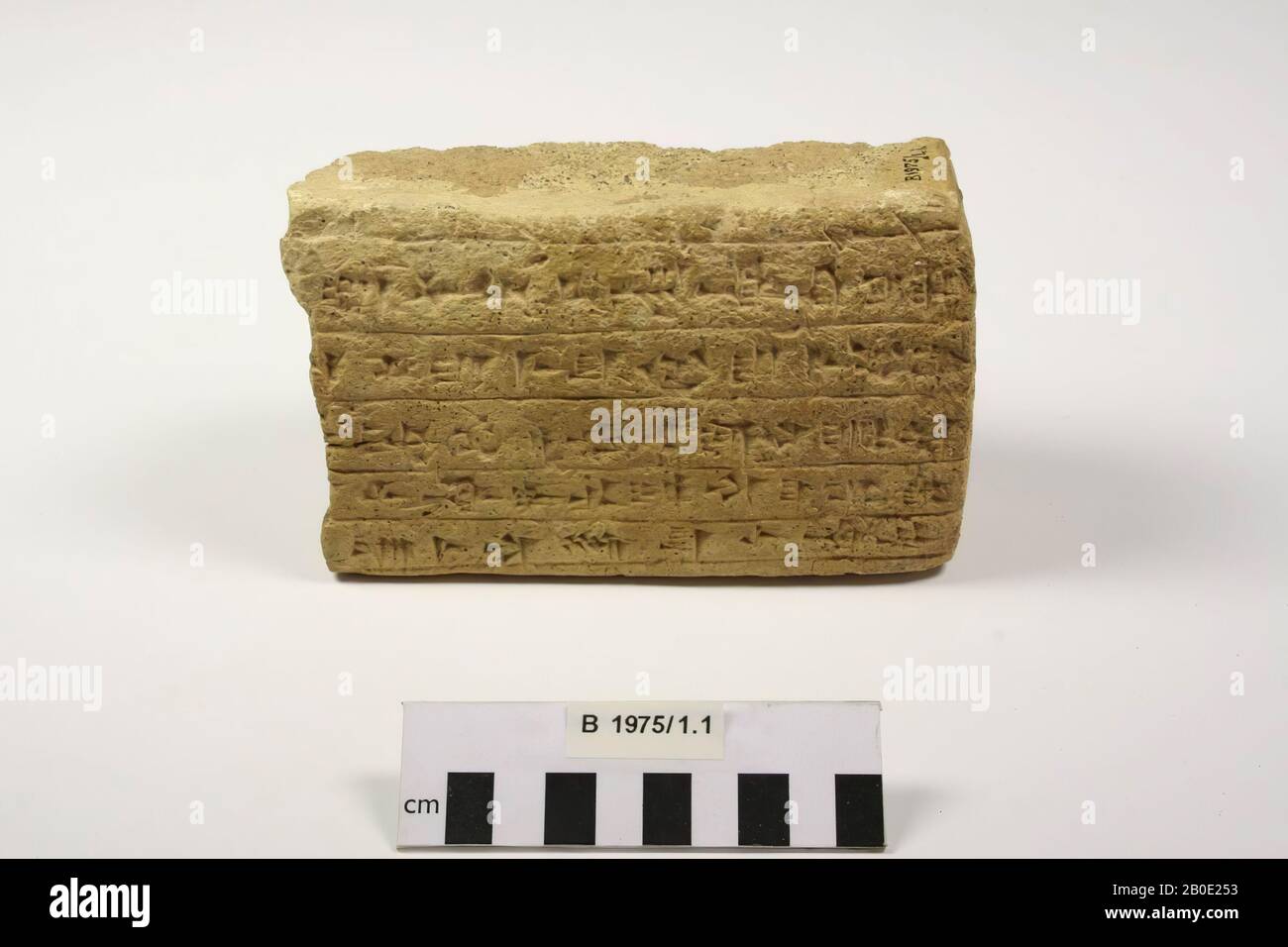 A fragment of a cornerstone with a cuneiform inscription running on two sides. King Untas-Napirisa of Elam (1275-1240 BC) is mentioned on it., Building element, inscription, pottery, L 7 cm, W 16 cm, H 9 cm, Middle Elamite Period 1275-1240 BC, Iran Stock Photohttps://www.alamy.com/image-license-details/?v=1https://www.alamy.com/a-fragment-of-a-cornerstone-with-a-cuneiform-inscription-running-on-two-sides-king-untas-napirisa-of-elam-1275-1240-bc-is-mentioned-on-it-building-element-inscription-pottery-l-7-cm-w-16-cm-h-9-cm-middle-elamite-period-1275-1240-bc-iran-image344516399.html
A fragment of a cornerstone with a cuneiform inscription running on two sides. King Untas-Napirisa of Elam (1275-1240 BC) is mentioned on it., Building element, inscription, pottery, L 7 cm, W 16 cm, H 9 cm, Middle Elamite Period 1275-1240 BC, Iran Stock Photohttps://www.alamy.com/image-license-details/?v=1https://www.alamy.com/a-fragment-of-a-cornerstone-with-a-cuneiform-inscription-running-on-two-sides-king-untas-napirisa-of-elam-1275-1240-bc-is-mentioned-on-it-building-element-inscription-pottery-l-7-cm-w-16-cm-h-9-cm-middle-elamite-period-1275-1240-bc-iran-image344516399.htmlRM2B0E253–A fragment of a cornerstone with a cuneiform inscription running on two sides. King Untas-Napirisa of Elam (1275-1240 BC) is mentioned on it., Building element, inscription, pottery, L 7 cm, W 16 cm, H 9 cm, Middle Elamite Period 1275-1240 BC, Iran
 Ganjnameh cuneiform inscriptions near Hamadan, Iran Stock Photohttps://www.alamy.com/image-license-details/?v=1https://www.alamy.com/ganjnameh-cuneiform-inscriptions-near-hamadan-iran-image504060468.html
Ganjnameh cuneiform inscriptions near Hamadan, Iran Stock Photohttps://www.alamy.com/image-license-details/?v=1https://www.alamy.com/ganjnameh-cuneiform-inscriptions-near-hamadan-iran-image504060468.htmlRF2M81X7G–Ganjnameh cuneiform inscriptions near Hamadan, Iran
 Chogha Zanbil, brick with cuneiform inscription, Ziggrat(ziqqrat) of the ancient Elamites, Khuzestan Province, Iran, Persia, Western Asia, Asia Stock Photohttps://www.alamy.com/image-license-details/?v=1https://www.alamy.com/chogha-zanbil-brick-with-cuneiform-inscription-ziggratziqqrat-of-the-ancient-elamites-khuzestan-province-iran-persia-western-asia-asia-image435498652.html
Chogha Zanbil, brick with cuneiform inscription, Ziggrat(ziqqrat) of the ancient Elamites, Khuzestan Province, Iran, Persia, Western Asia, Asia Stock Photohttps://www.alamy.com/image-license-details/?v=1https://www.alamy.com/chogha-zanbil-brick-with-cuneiform-inscription-ziggratziqqrat-of-the-ancient-elamites-khuzestan-province-iran-persia-western-asia-asia-image435498652.htmlRM2G8EJY8–Chogha Zanbil, brick with cuneiform inscription, Ziggrat(ziqqrat) of the ancient Elamites, Khuzestan Province, Iran, Persia, Western Asia, Asia
 Pottery depicting a bull, with cuneiform inscriptions dedicated to Inshusinak on its back. It was found at the entrance of Chogha Zanbil ziggurat, near Susa, 2200 BC. The National Museum of Iran. Tehran. Stock Photohttps://www.alamy.com/image-license-details/?v=1https://www.alamy.com/pottery-depicting-a-bull-with-cuneiform-inscriptions-dedicated-to-inshusinak-on-its-back-it-was-found-at-the-entrance-of-chogha-zanbil-ziggurat-near-susa-2200-bc-the-national-museum-of-iran-tehran-image220342763.html
Pottery depicting a bull, with cuneiform inscriptions dedicated to Inshusinak on its back. It was found at the entrance of Chogha Zanbil ziggurat, near Susa, 2200 BC. The National Museum of Iran. Tehran. Stock Photohttps://www.alamy.com/image-license-details/?v=1https://www.alamy.com/pottery-depicting-a-bull-with-cuneiform-inscriptions-dedicated-to-inshusinak-on-its-back-it-was-found-at-the-entrance-of-chogha-zanbil-ziggurat-near-susa-2200-bc-the-national-museum-of-iran-tehran-image220342763.htmlRMPPDDCB–Pottery depicting a bull, with cuneiform inscriptions dedicated to Inshusinak on its back. It was found at the entrance of Chogha Zanbil ziggurat, near Susa, 2200 BC. The National Museum of Iran. Tehran.
 A fragment of a brick with a six-line cuneiform script separated by horizontal line (six lines). King Untas-Napirisa and his father Humbannumena are called., Building element, inscription, pottery, L 5.8 cm, H 9.8 cm, B 10.6 cm, Middle Elamite Period 1265-1245 BC, Iran Stock Photohttps://www.alamy.com/image-license-details/?v=1https://www.alamy.com/a-fragment-of-a-brick-with-a-six-line-cuneiform-script-separated-by-horizontal-line-six-lines-king-untas-napirisa-and-his-father-humbannumena-are-called-building-element-inscription-pottery-l-58-cm-h-98-cm-b-106-cm-middle-elamite-period-1265-1245-bc-iran-image344516396.html
A fragment of a brick with a six-line cuneiform script separated by horizontal line (six lines). King Untas-Napirisa and his father Humbannumena are called., Building element, inscription, pottery, L 5.8 cm, H 9.8 cm, B 10.6 cm, Middle Elamite Period 1265-1245 BC, Iran Stock Photohttps://www.alamy.com/image-license-details/?v=1https://www.alamy.com/a-fragment-of-a-brick-with-a-six-line-cuneiform-script-separated-by-horizontal-line-six-lines-king-untas-napirisa-and-his-father-humbannumena-are-called-building-element-inscription-pottery-l-58-cm-h-98-cm-b-106-cm-middle-elamite-period-1265-1245-bc-iran-image344516396.htmlRM2B0E250–A fragment of a brick with a six-line cuneiform script separated by horizontal line (six lines). King Untas-Napirisa and his father Humbannumena are called., Building element, inscription, pottery, L 5.8 cm, H 9.8 cm, B 10.6 cm, Middle Elamite Period 1265-1245 BC, Iran
 Chogha Zanbil, brick with cuneiform inscription, Ziggrat(ziqqrat) of the ancient Elamites, Khuzestan Province, Iran, Persia, Western Asia, Asia Stock Photohttps://www.alamy.com/image-license-details/?v=1https://www.alamy.com/chogha-zanbil-brick-with-cuneiform-inscription-ziggratziqqrat-of-the-ancient-elamites-khuzestan-province-iran-persia-western-asia-asia-image435498599.html
Chogha Zanbil, brick with cuneiform inscription, Ziggrat(ziqqrat) of the ancient Elamites, Khuzestan Province, Iran, Persia, Western Asia, Asia Stock Photohttps://www.alamy.com/image-license-details/?v=1https://www.alamy.com/chogha-zanbil-brick-with-cuneiform-inscription-ziggratziqqrat-of-the-ancient-elamites-khuzestan-province-iran-persia-western-asia-asia-image435498599.htmlRM2G8EJWB–Chogha Zanbil, brick with cuneiform inscription, Ziggrat(ziqqrat) of the ancient Elamites, Khuzestan Province, Iran, Persia, Western Asia, Asia
 A glazed brick broken in two pieces with a cuneiform inscription, on which the name Sutruk-Nahhunte I appears, probably the king of Elam (1185-1155 BC). From a foundation, building element, inscription, pottery, L 8 cm, W 16 cm, H 6.5 cm, Middle Elamite Period 1185-1155 BC, Iran Stock Photohttps://www.alamy.com/image-license-details/?v=1https://www.alamy.com/a-glazed-brick-broken-in-two-pieces-with-a-cuneiform-inscription-on-which-the-name-sutruk-nahhunte-i-appears-probably-the-king-of-elam-1185-1155-bc-from-a-foundation-building-element-inscription-pottery-l-8-cm-w-16-cm-h-65-cm-middle-elamite-period-1185-1155-bc-iran-image344516661.html
A glazed brick broken in two pieces with a cuneiform inscription, on which the name Sutruk-Nahhunte I appears, probably the king of Elam (1185-1155 BC). From a foundation, building element, inscription, pottery, L 8 cm, W 16 cm, H 6.5 cm, Middle Elamite Period 1185-1155 BC, Iran Stock Photohttps://www.alamy.com/image-license-details/?v=1https://www.alamy.com/a-glazed-brick-broken-in-two-pieces-with-a-cuneiform-inscription-on-which-the-name-sutruk-nahhunte-i-appears-probably-the-king-of-elam-1185-1155-bc-from-a-foundation-building-element-inscription-pottery-l-8-cm-w-16-cm-h-65-cm-middle-elamite-period-1185-1155-bc-iran-image344516661.htmlRM2B0E2ED–A glazed brick broken in two pieces with a cuneiform inscription, on which the name Sutruk-Nahhunte I appears, probably the king of Elam (1185-1155 BC). From a foundation, building element, inscription, pottery, L 8 cm, W 16 cm, H 6.5 cm, Middle Elamite Period 1185-1155 BC, Iran
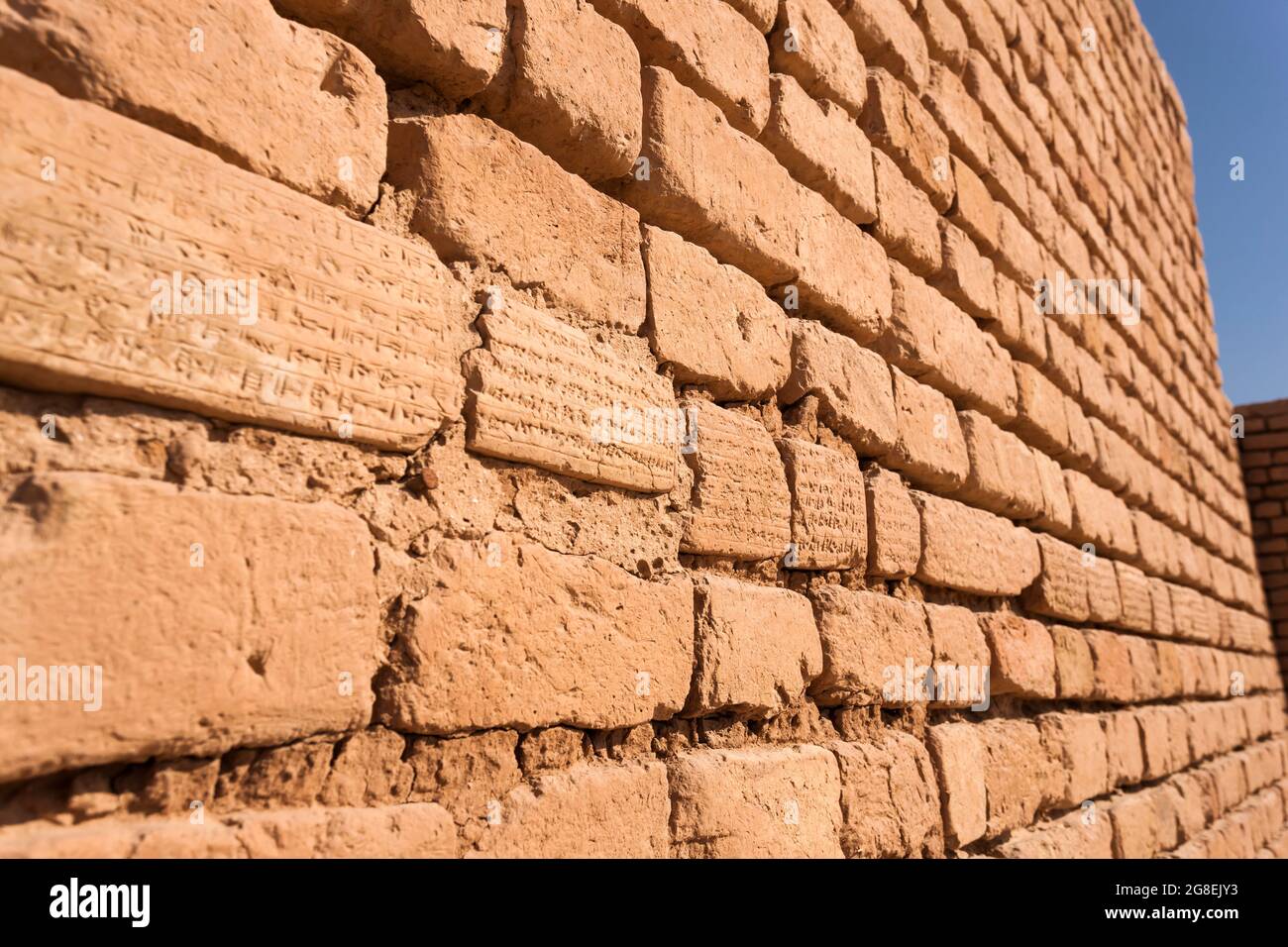 Chogha Zanbil, brick with cuneiform inscription, Ziggrat(ziqqrat) of the ancient Elamites, Khuzestan Province, Iran, Persia, Western Asia, Asia Stock Photohttps://www.alamy.com/image-license-details/?v=1https://www.alamy.com/chogha-zanbil-brick-with-cuneiform-inscription-ziggratziqqrat-of-the-ancient-elamites-khuzestan-province-iran-persia-western-asia-asia-image435498647.html
Chogha Zanbil, brick with cuneiform inscription, Ziggrat(ziqqrat) of the ancient Elamites, Khuzestan Province, Iran, Persia, Western Asia, Asia Stock Photohttps://www.alamy.com/image-license-details/?v=1https://www.alamy.com/chogha-zanbil-brick-with-cuneiform-inscription-ziggratziqqrat-of-the-ancient-elamites-khuzestan-province-iran-persia-western-asia-asia-image435498647.htmlRM2G8EJY3–Chogha Zanbil, brick with cuneiform inscription, Ziggrat(ziqqrat) of the ancient Elamites, Khuzestan Province, Iran, Persia, Western Asia, Asia
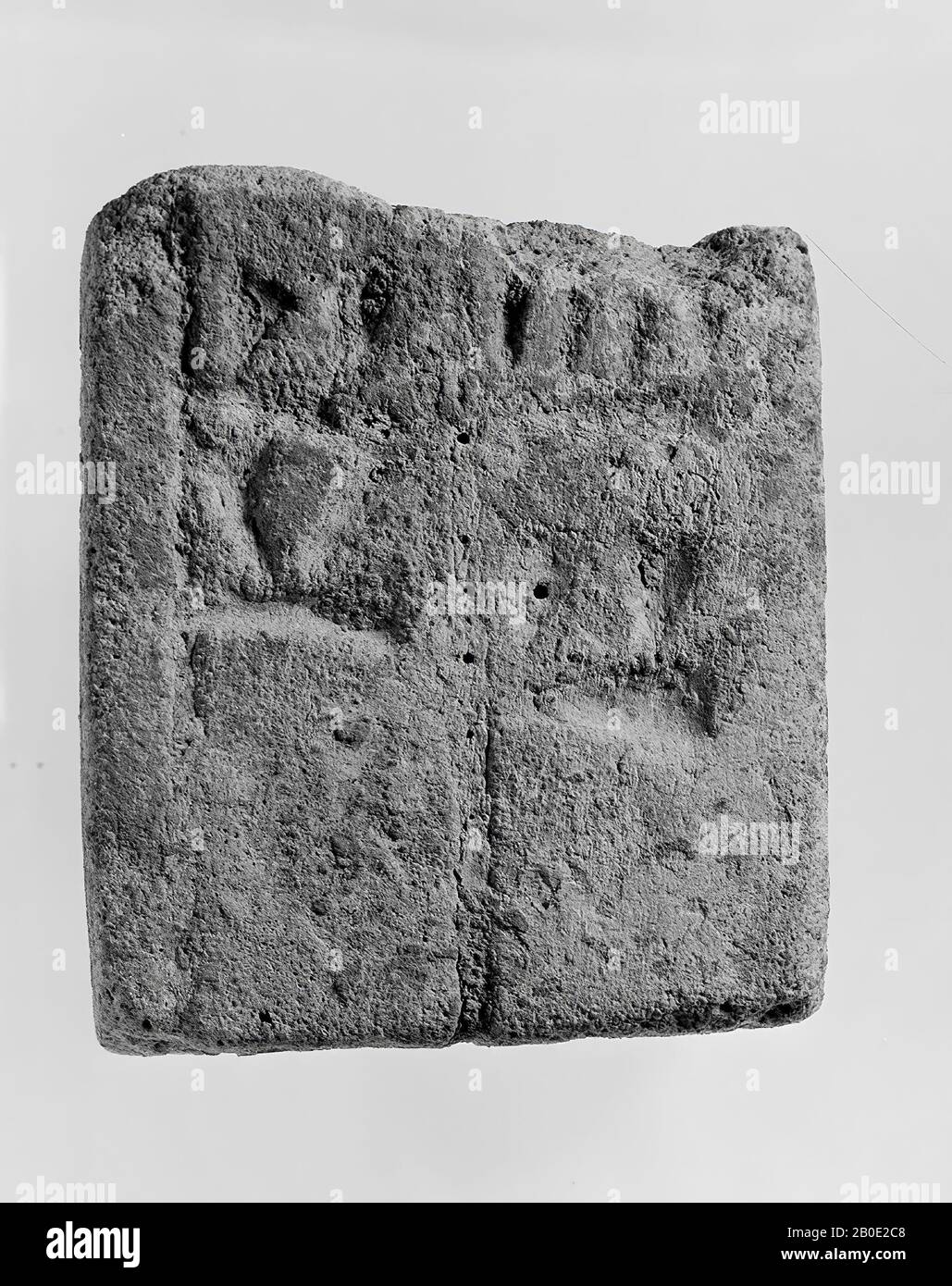 A fragment of a glazed brick with a cuneiform inscription that runs over two sides. The name Sutruk-Nahhunte comes across, probably the king of Elam (1185-1155 BC), building element, inscription, pottery, glaze, L 6.5 cm, W 7 cm, H 5.8 cm, Middle Elamite Period 1185- 1155 BC, Iran Stock Photohttps://www.alamy.com/image-license-details/?v=1https://www.alamy.com/a-fragment-of-a-glazed-brick-with-a-cuneiform-inscription-that-runs-over-two-sides-the-name-sutruk-nahhunte-comes-across-probably-the-king-of-elam-1185-1155-bc-building-element-inscription-pottery-glaze-l-65-cm-w-7-cm-h-58-cm-middle-elamite-period-1185-1155-bc-iran-image344516600.html
A fragment of a glazed brick with a cuneiform inscription that runs over two sides. The name Sutruk-Nahhunte comes across, probably the king of Elam (1185-1155 BC), building element, inscription, pottery, glaze, L 6.5 cm, W 7 cm, H 5.8 cm, Middle Elamite Period 1185- 1155 BC, Iran Stock Photohttps://www.alamy.com/image-license-details/?v=1https://www.alamy.com/a-fragment-of-a-glazed-brick-with-a-cuneiform-inscription-that-runs-over-two-sides-the-name-sutruk-nahhunte-comes-across-probably-the-king-of-elam-1185-1155-bc-building-element-inscription-pottery-glaze-l-65-cm-w-7-cm-h-58-cm-middle-elamite-period-1185-1155-bc-iran-image344516600.htmlRM2B0E2C8–A fragment of a glazed brick with a cuneiform inscription that runs over two sides. The name Sutruk-Nahhunte comes across, probably the king of Elam (1185-1155 BC), building element, inscription, pottery, glaze, L 6.5 cm, W 7 cm, H 5.8 cm, Middle Elamite Period 1185- 1155 BC, Iran
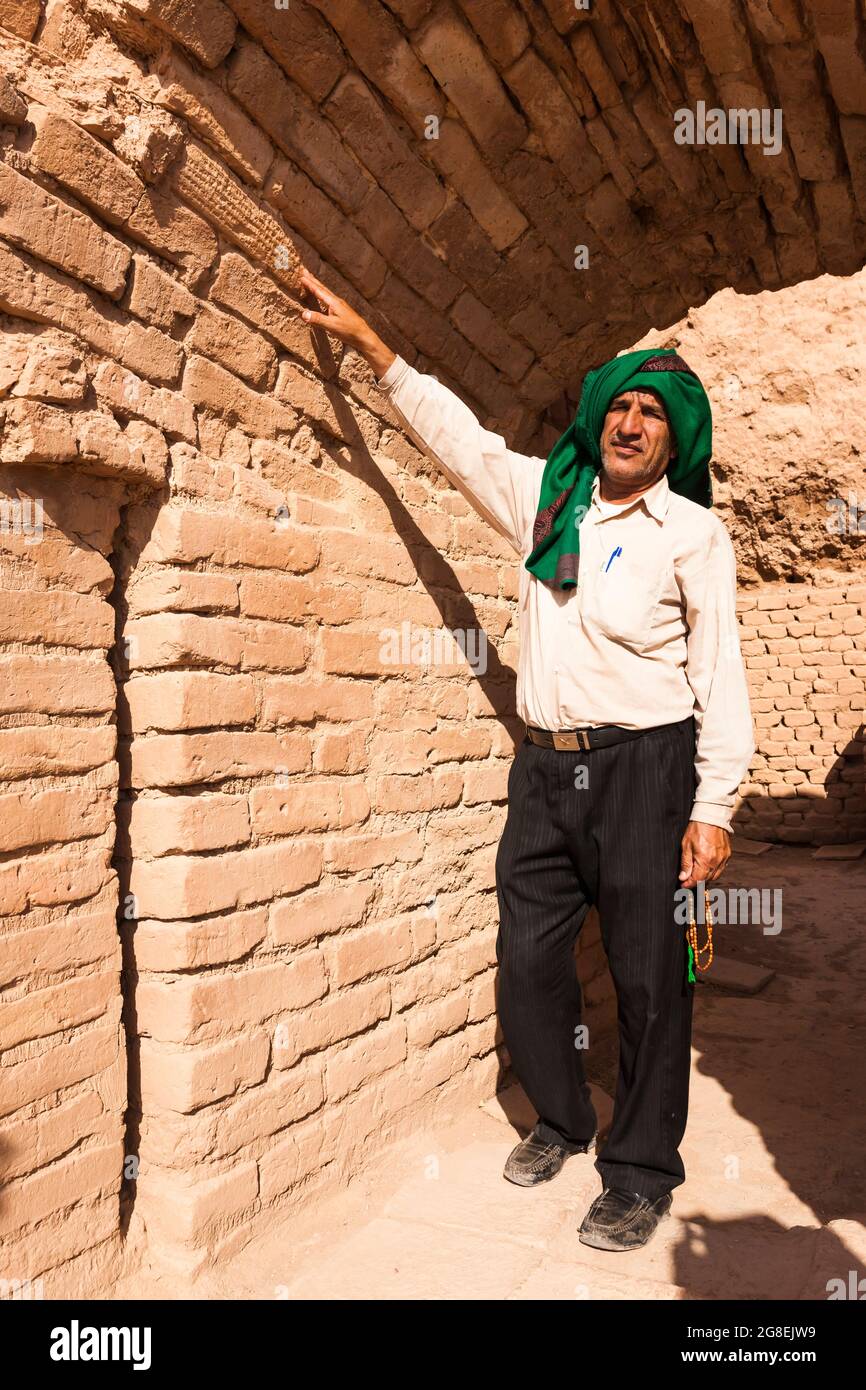 Chogha Zanbil, local guide shows brick with cuneiform inscription, Ziggrat(ziqqrat) of Elamites, Khuzestan Province, Iran, Persia, Western Asia, Asia Stock Photohttps://www.alamy.com/image-license-details/?v=1https://www.alamy.com/chogha-zanbil-local-guide-shows-brick-with-cuneiform-inscription-ziggratziqqrat-of-elamites-khuzestan-province-iran-persia-western-asia-asia-image435498597.html
Chogha Zanbil, local guide shows brick with cuneiform inscription, Ziggrat(ziqqrat) of Elamites, Khuzestan Province, Iran, Persia, Western Asia, Asia Stock Photohttps://www.alamy.com/image-license-details/?v=1https://www.alamy.com/chogha-zanbil-local-guide-shows-brick-with-cuneiform-inscription-ziggratziqqrat-of-elamites-khuzestan-province-iran-persia-western-asia-asia-image435498597.htmlRM2G8EJW9–Chogha Zanbil, local guide shows brick with cuneiform inscription, Ziggrat(ziqqrat) of Elamites, Khuzestan Province, Iran, Persia, Western Asia, Asia
 Chogha Zanbil, brick with cuneiform inscription, Ziggrat(ziqqrat) of the ancient Elamites, Khuzestan Province, Iran, Persia, Western Asia, Asia Stock Photohttps://www.alamy.com/image-license-details/?v=1https://www.alamy.com/chogha-zanbil-brick-with-cuneiform-inscription-ziggratziqqrat-of-the-ancient-elamites-khuzestan-province-iran-persia-western-asia-asia-image433994445.html
Chogha Zanbil, brick with cuneiform inscription, Ziggrat(ziqqrat) of the ancient Elamites, Khuzestan Province, Iran, Persia, Western Asia, Asia Stock Photohttps://www.alamy.com/image-license-details/?v=1https://www.alamy.com/chogha-zanbil-brick-with-cuneiform-inscription-ziggratziqqrat-of-the-ancient-elamites-khuzestan-province-iran-persia-western-asia-asia-image433994445.htmlRM2G6249H–Chogha Zanbil, brick with cuneiform inscription, Ziggrat(ziqqrat) of the ancient Elamites, Khuzestan Province, Iran, Persia, Western Asia, Asia
 A fragment of a glazed brick with a cuneiform inscription. The name Sutruk-Nahhunte, probably king of Elam (1185-1155 BC), is mentioned. It is a hard baked cornerstone with Akkadian inscription., Building element, inscription, pottery, glaze, L 8.5 cm, W 7.8 cm, H 6 cm, Middle Elamite Period 1185-1155 BC, Iran Stock Photohttps://www.alamy.com/image-license-details/?v=1https://www.alamy.com/a-fragment-of-a-glazed-brick-with-a-cuneiform-inscription-the-name-sutruk-nahhunte-probably-king-of-elam-1185-1155-bc-is-mentioned-it-is-a-hard-baked-cornerstone-with-akkadian-inscription-building-element-inscription-pottery-glaze-l-85-cm-w-78-cm-h-6-cm-middle-elamite-period-1185-1155-bc-iran-image344516596.html
A fragment of a glazed brick with a cuneiform inscription. The name Sutruk-Nahhunte, probably king of Elam (1185-1155 BC), is mentioned. It is a hard baked cornerstone with Akkadian inscription., Building element, inscription, pottery, glaze, L 8.5 cm, W 7.8 cm, H 6 cm, Middle Elamite Period 1185-1155 BC, Iran Stock Photohttps://www.alamy.com/image-license-details/?v=1https://www.alamy.com/a-fragment-of-a-glazed-brick-with-a-cuneiform-inscription-the-name-sutruk-nahhunte-probably-king-of-elam-1185-1155-bc-is-mentioned-it-is-a-hard-baked-cornerstone-with-akkadian-inscription-building-element-inscription-pottery-glaze-l-85-cm-w-78-cm-h-6-cm-middle-elamite-period-1185-1155-bc-iran-image344516596.htmlRM2B0E2C4–A fragment of a glazed brick with a cuneiform inscription. The name Sutruk-Nahhunte, probably king of Elam (1185-1155 BC), is mentioned. It is a hard baked cornerstone with Akkadian inscription., Building element, inscription, pottery, glaze, L 8.5 cm, W 7.8 cm, H 6 cm, Middle Elamite Period 1185-1155 BC, Iran
 Chogha Zanbil, brick with cuneiform inscription, Ziggrat(ziqqrat) of the ancient Elamites, Khuzestan Province, Iran, Persia, Western Asia, Asia Stock Photohttps://www.alamy.com/image-license-details/?v=1https://www.alamy.com/chogha-zanbil-brick-with-cuneiform-inscription-ziggratziqqrat-of-the-ancient-elamites-khuzestan-province-iran-persia-western-asia-asia-image433994519.html
Chogha Zanbil, brick with cuneiform inscription, Ziggrat(ziqqrat) of the ancient Elamites, Khuzestan Province, Iran, Persia, Western Asia, Asia Stock Photohttps://www.alamy.com/image-license-details/?v=1https://www.alamy.com/chogha-zanbil-brick-with-cuneiform-inscription-ziggratziqqrat-of-the-ancient-elamites-khuzestan-province-iran-persia-western-asia-asia-image433994519.htmlRM2G624C7–Chogha Zanbil, brick with cuneiform inscription, Ziggrat(ziqqrat) of the ancient Elamites, Khuzestan Province, Iran, Persia, Western Asia, Asia